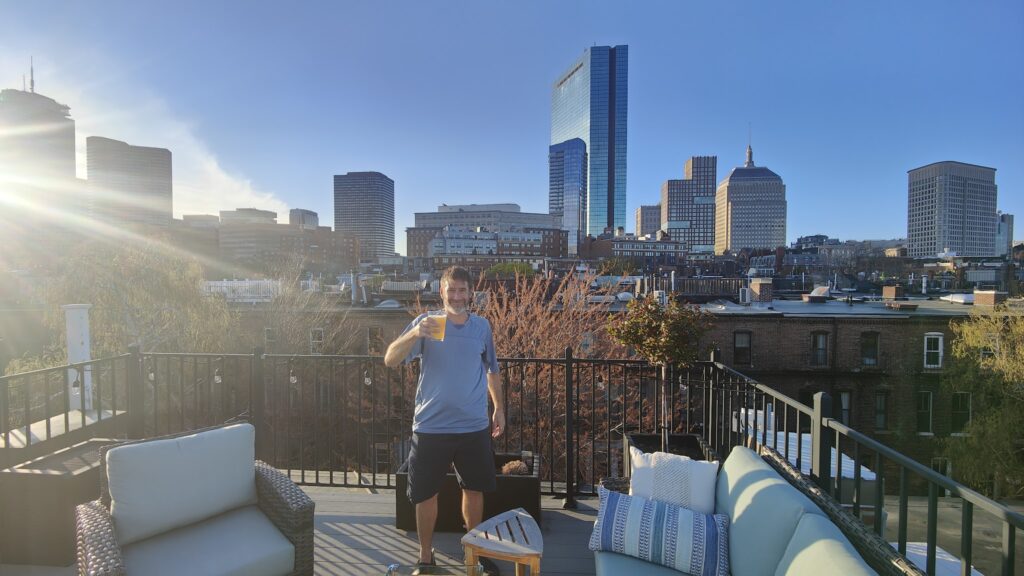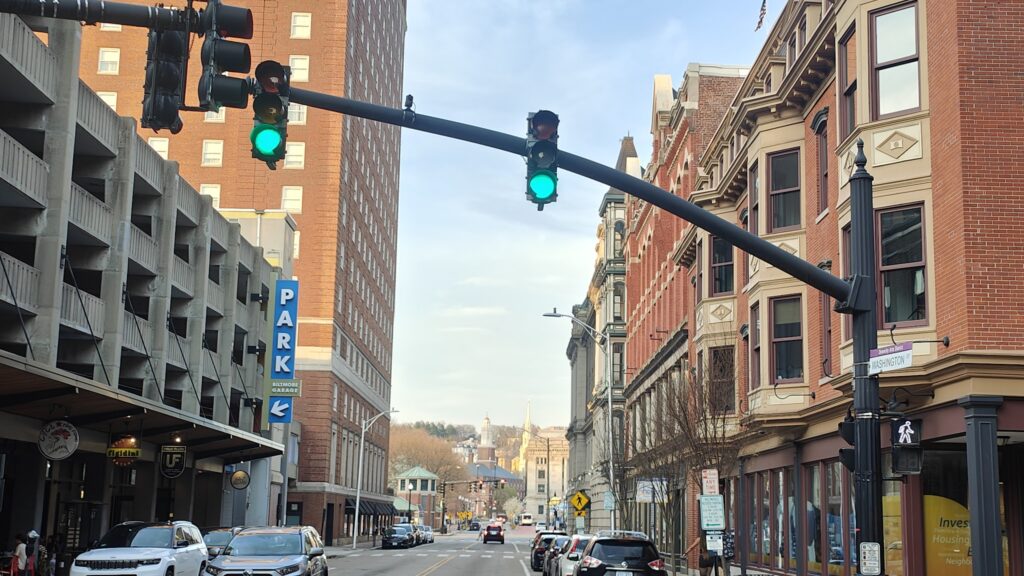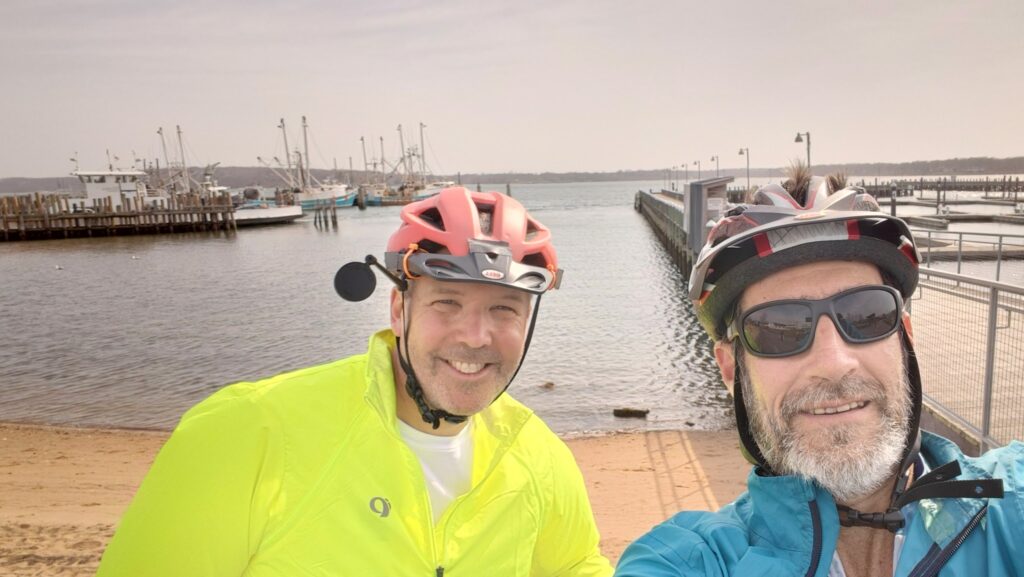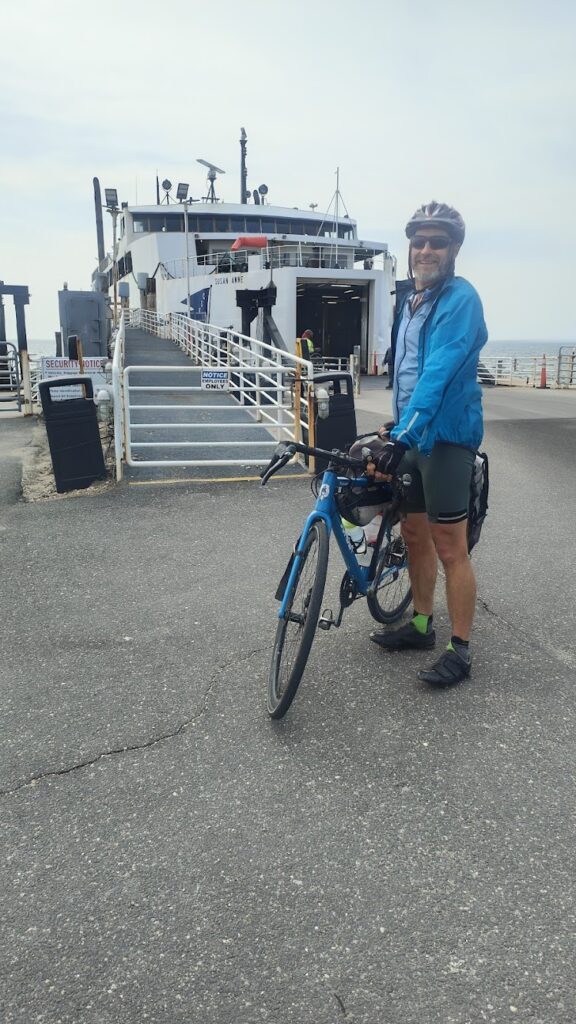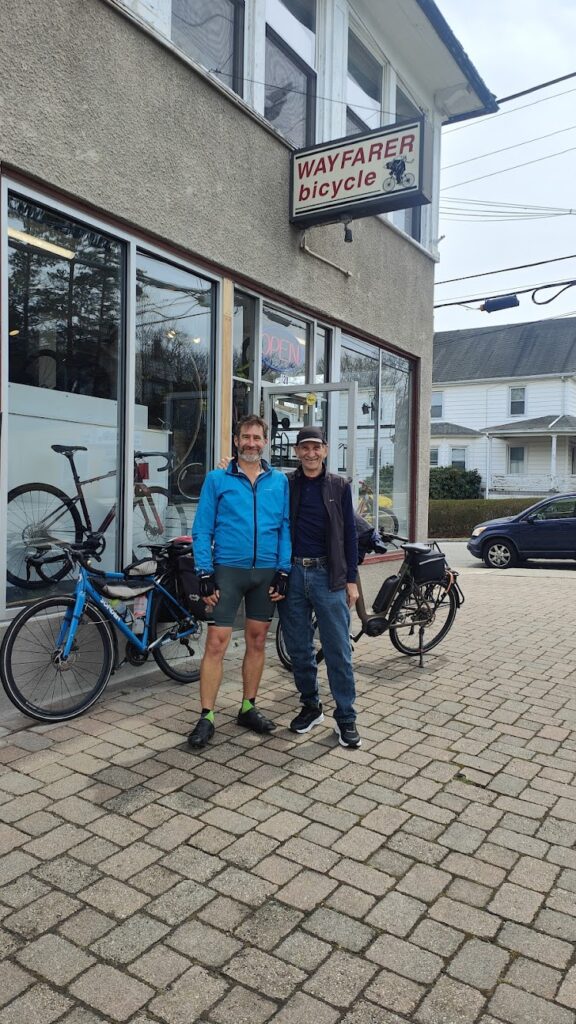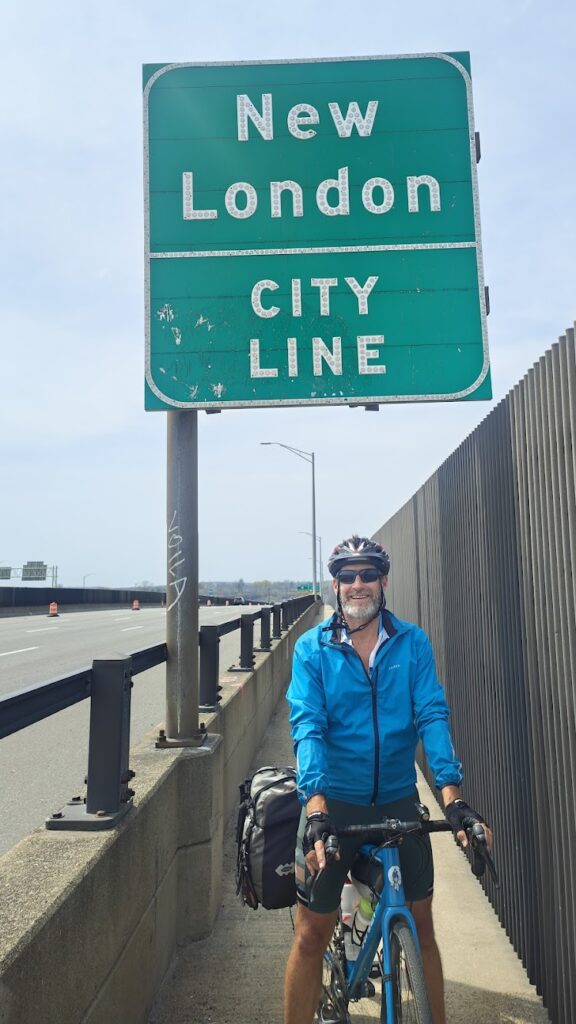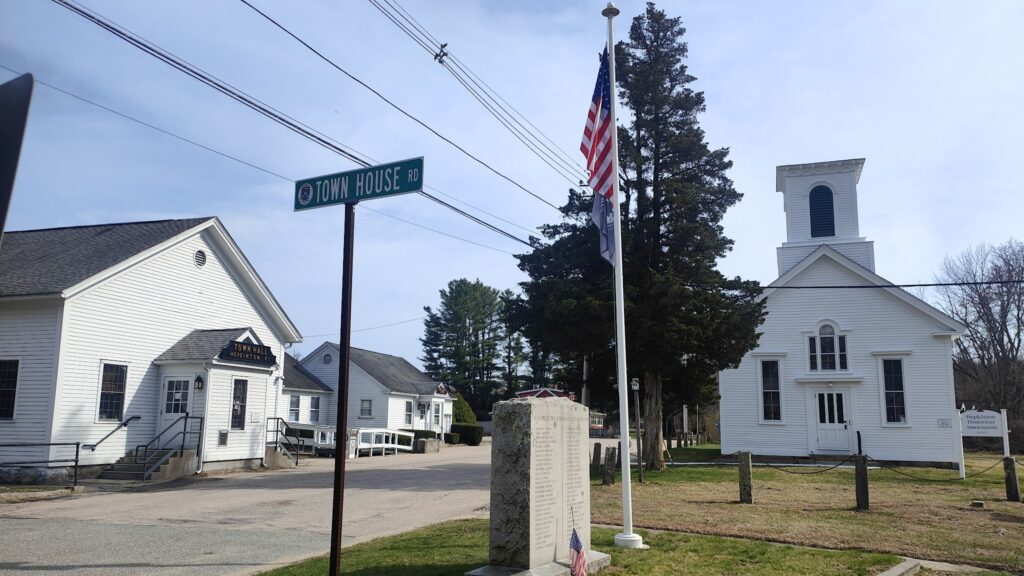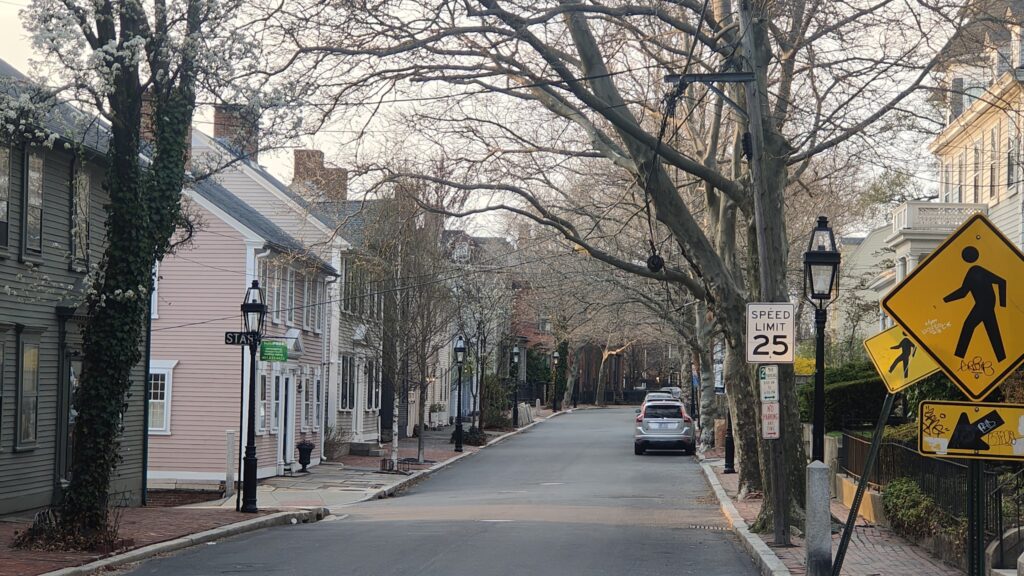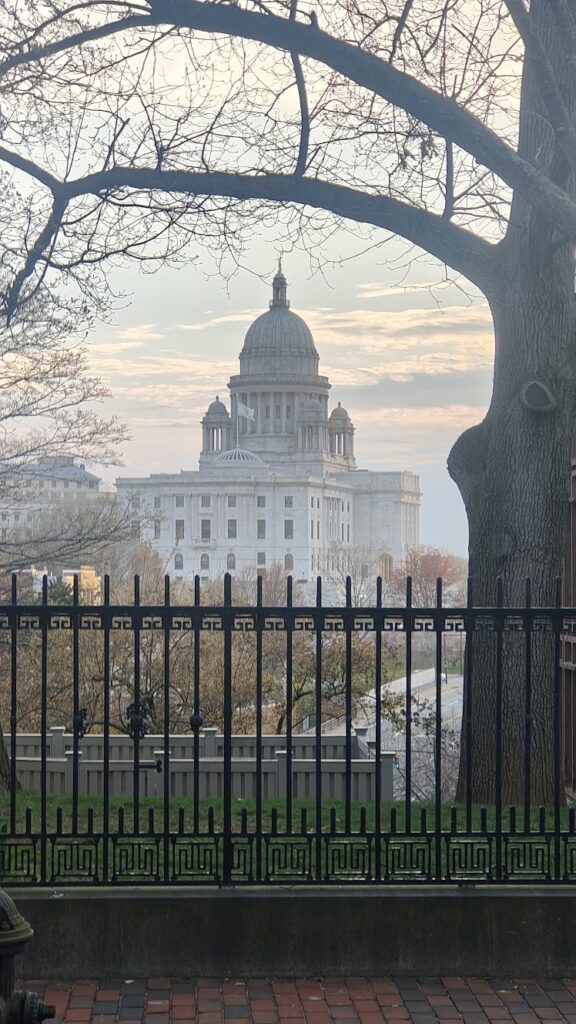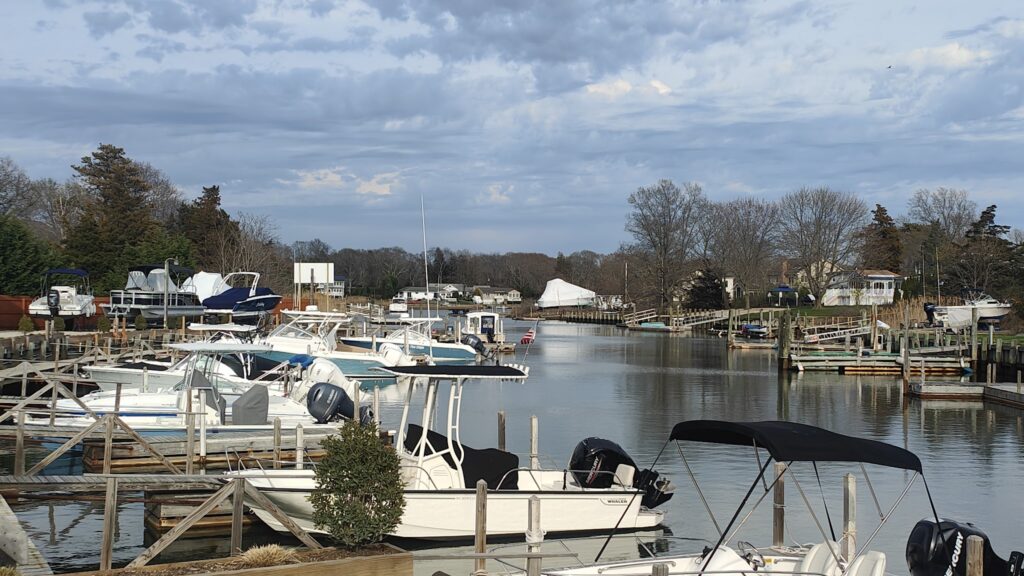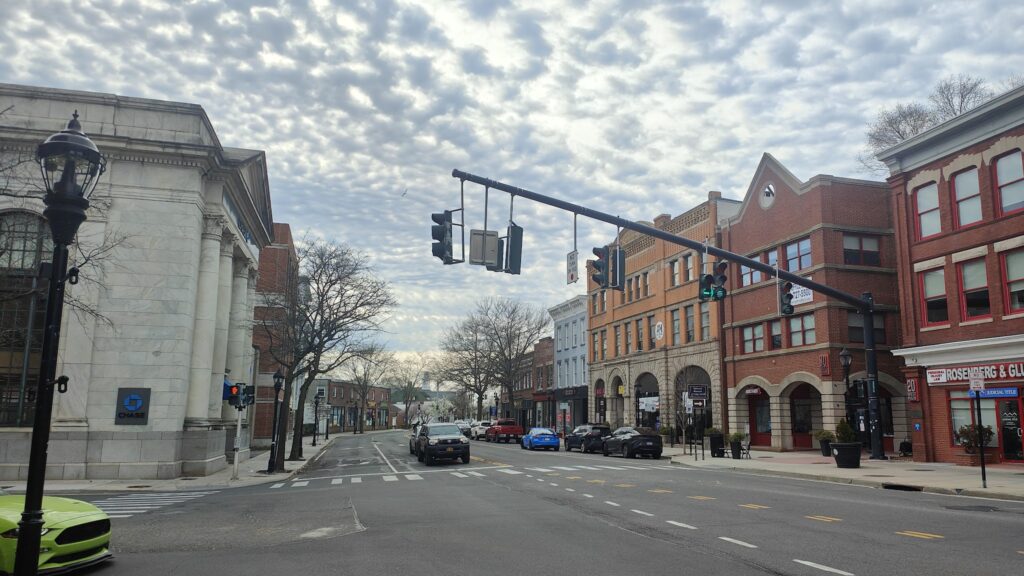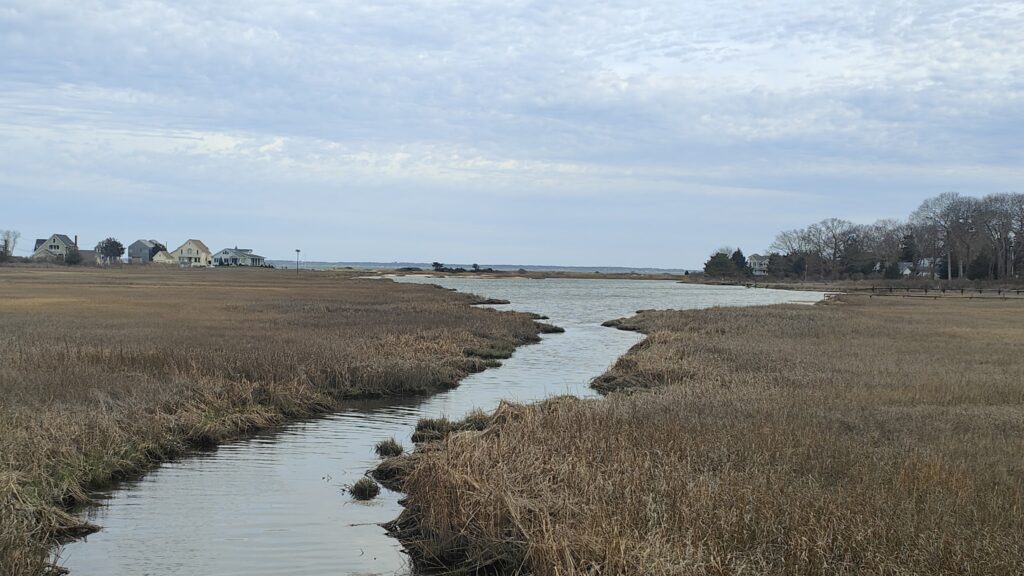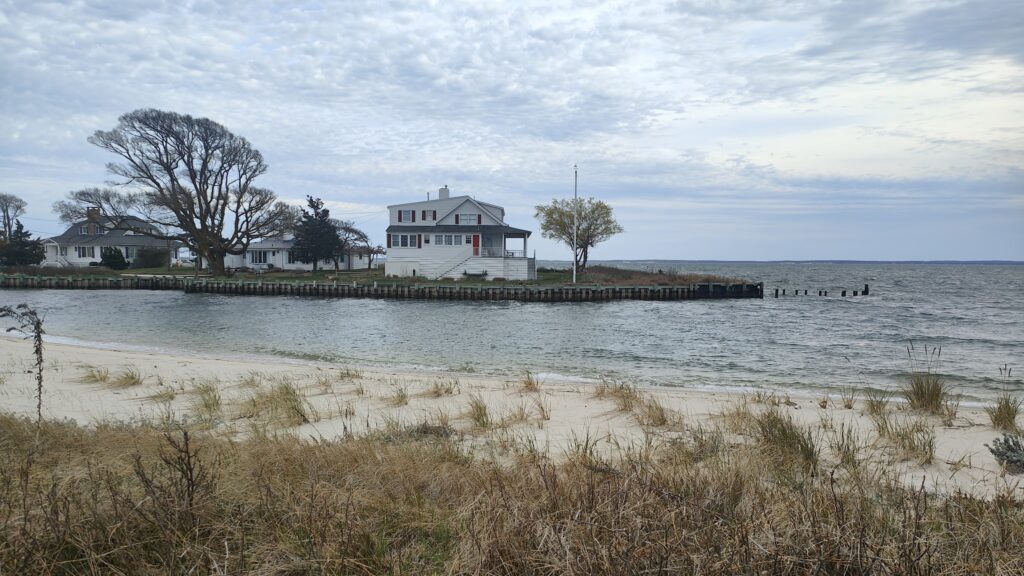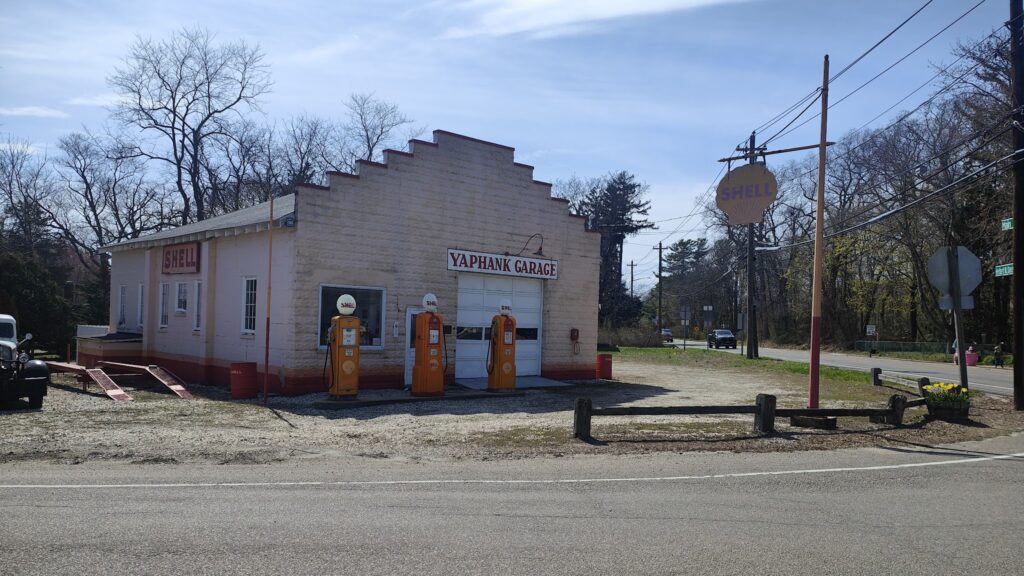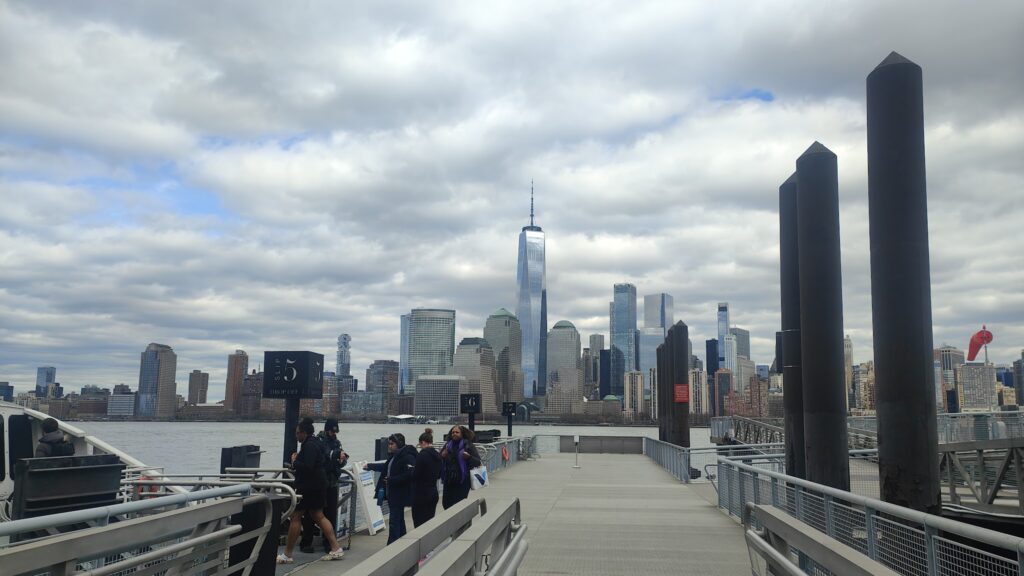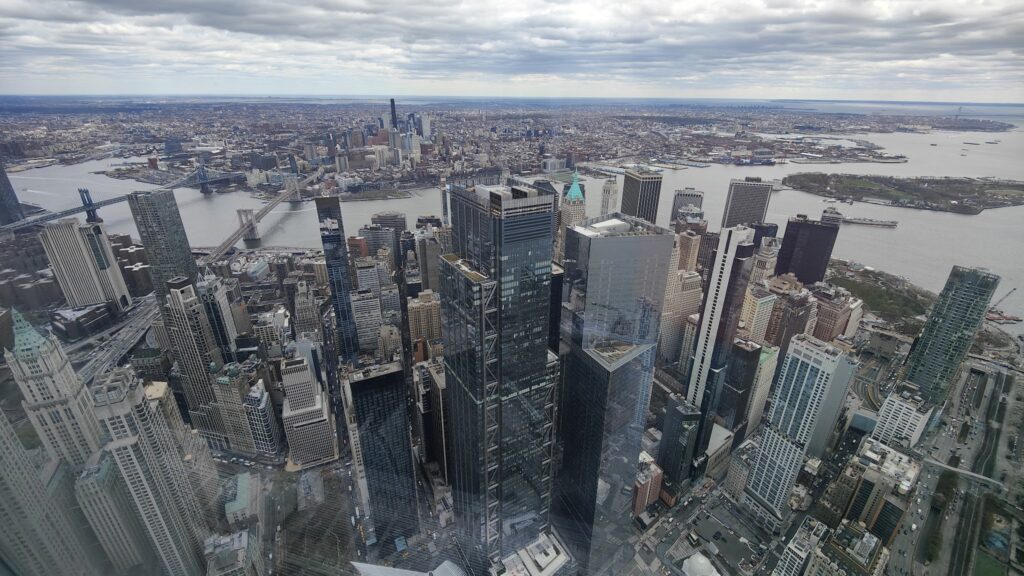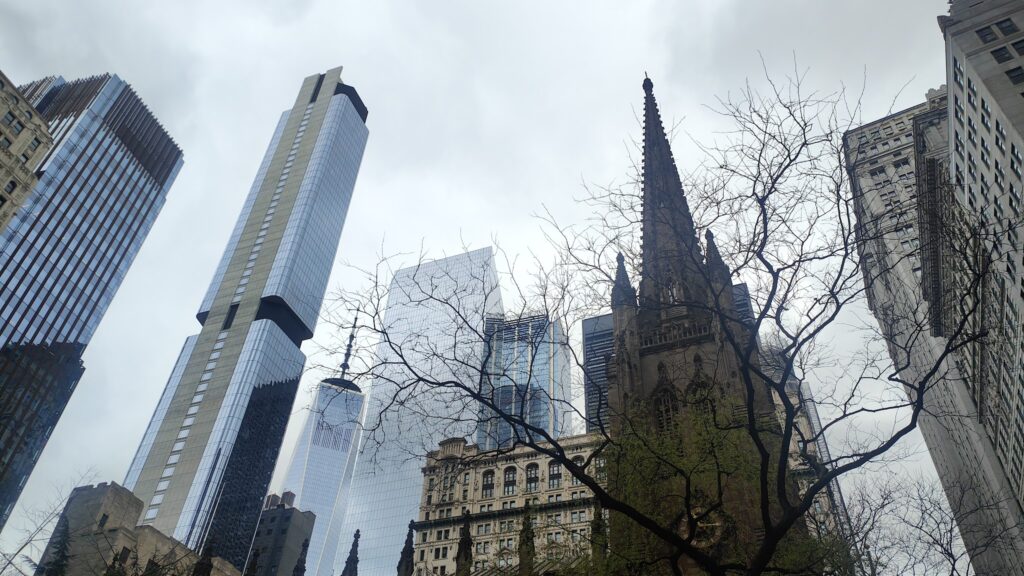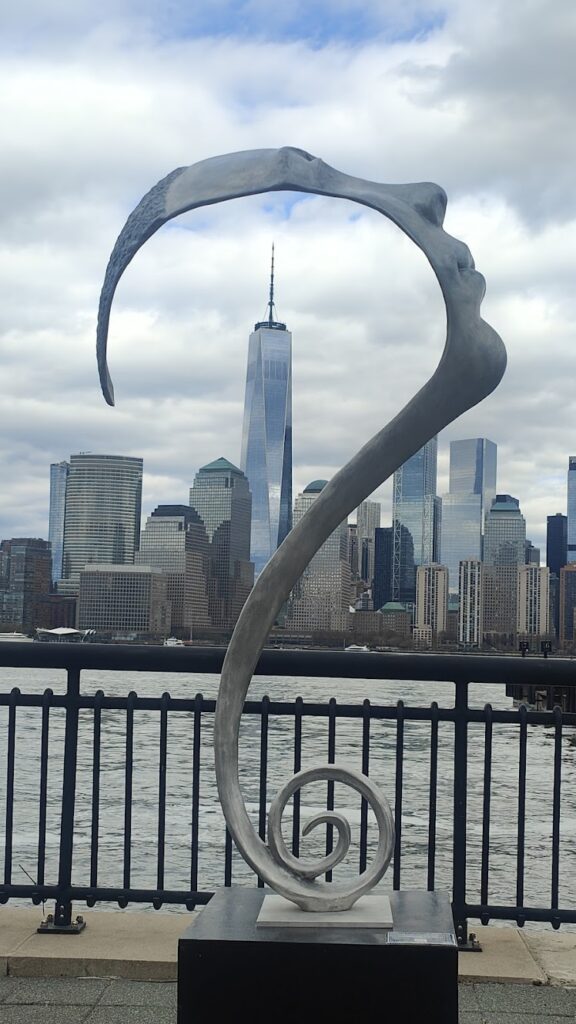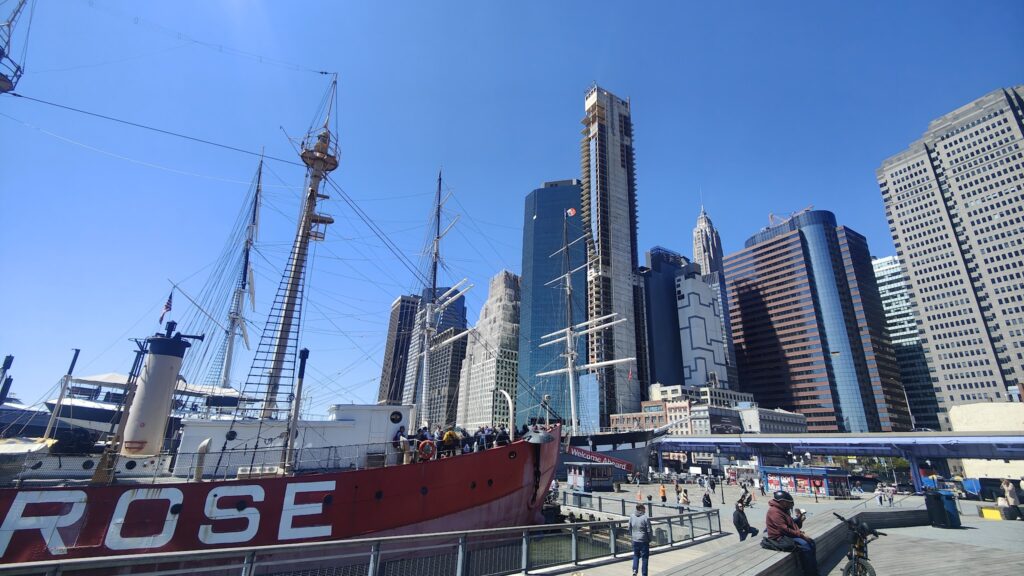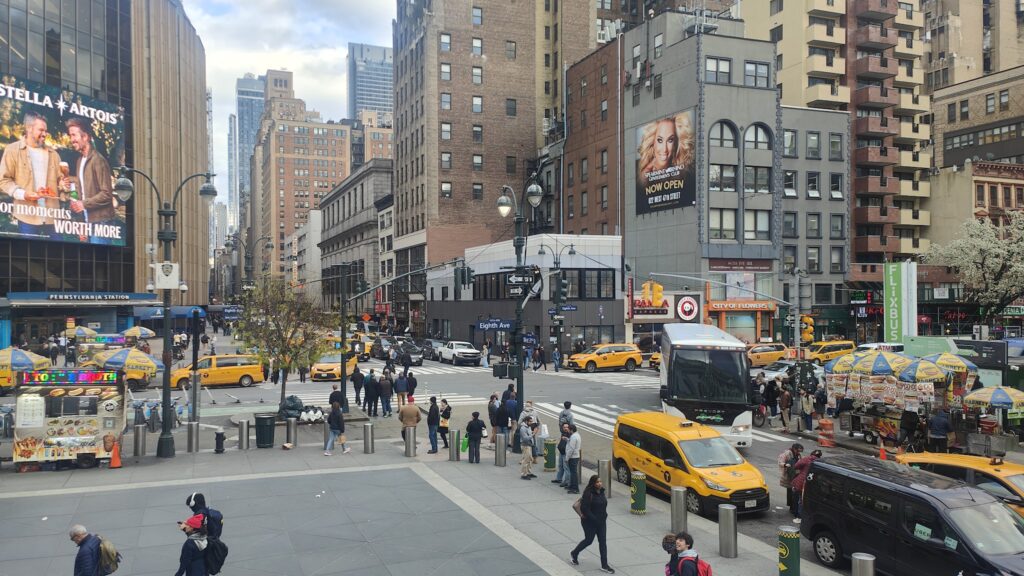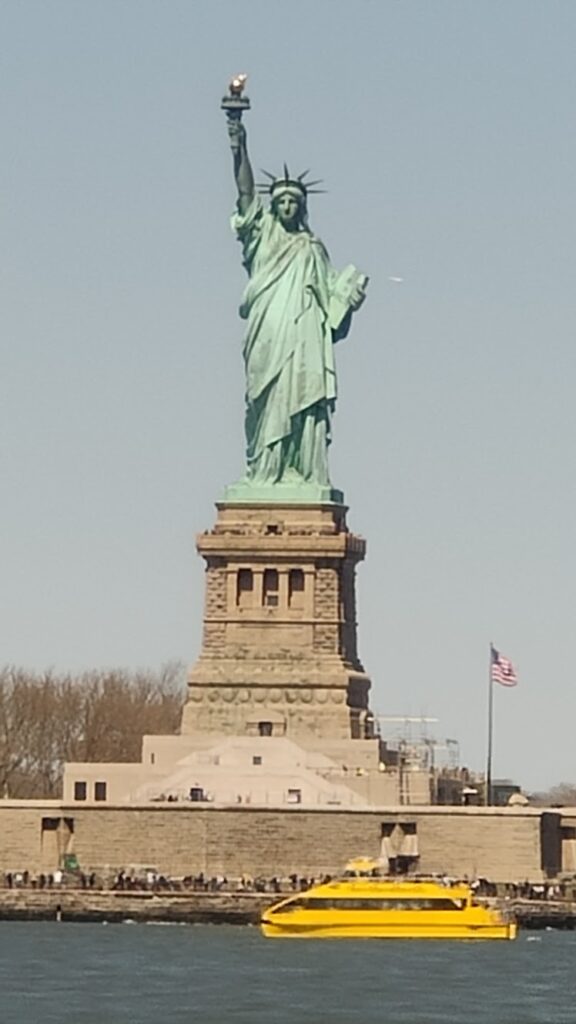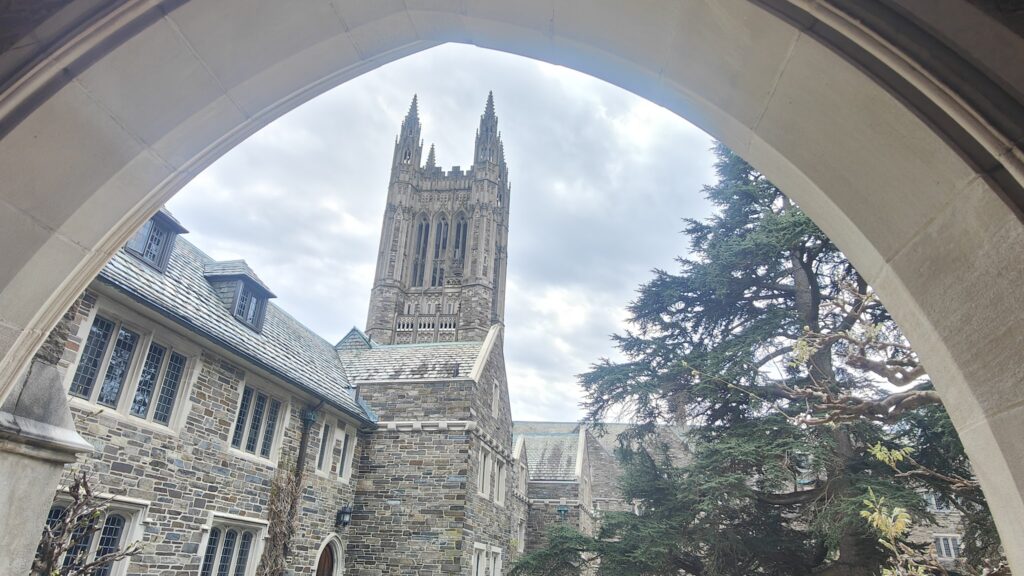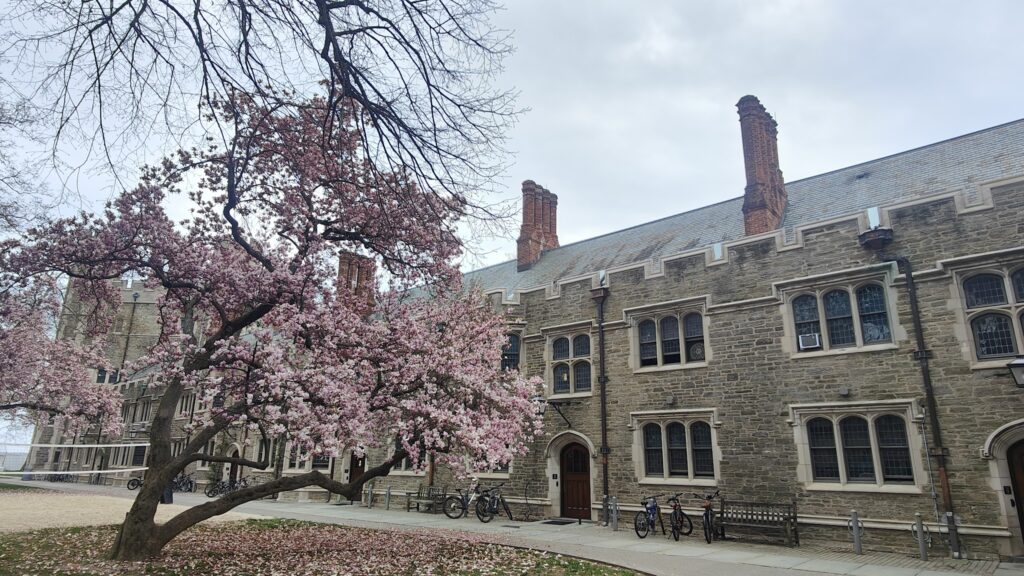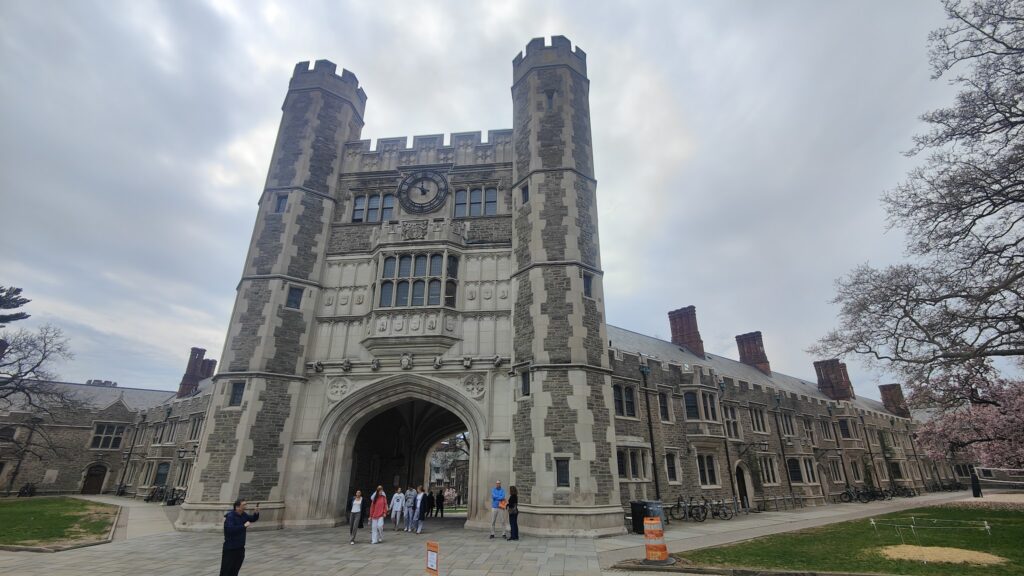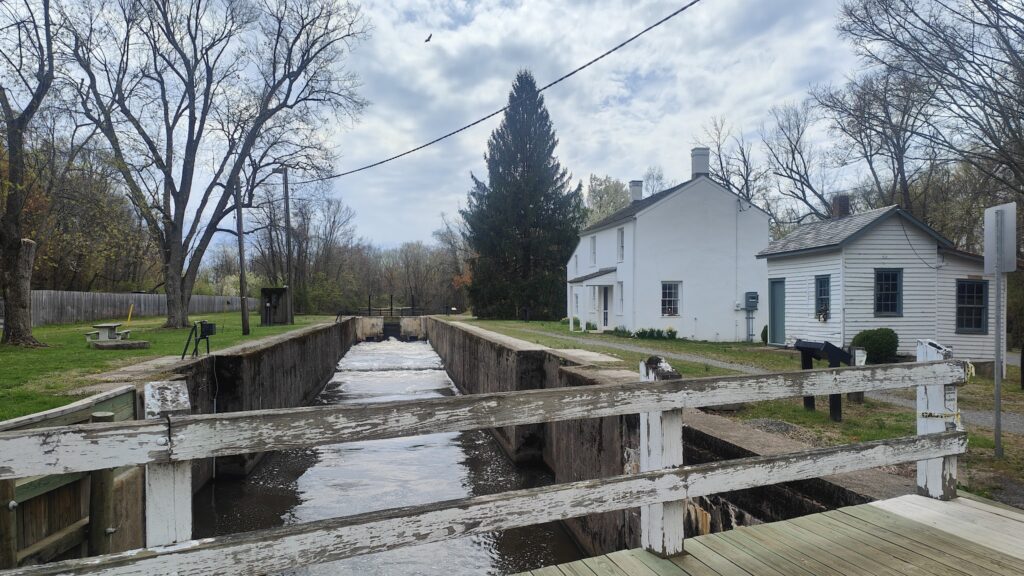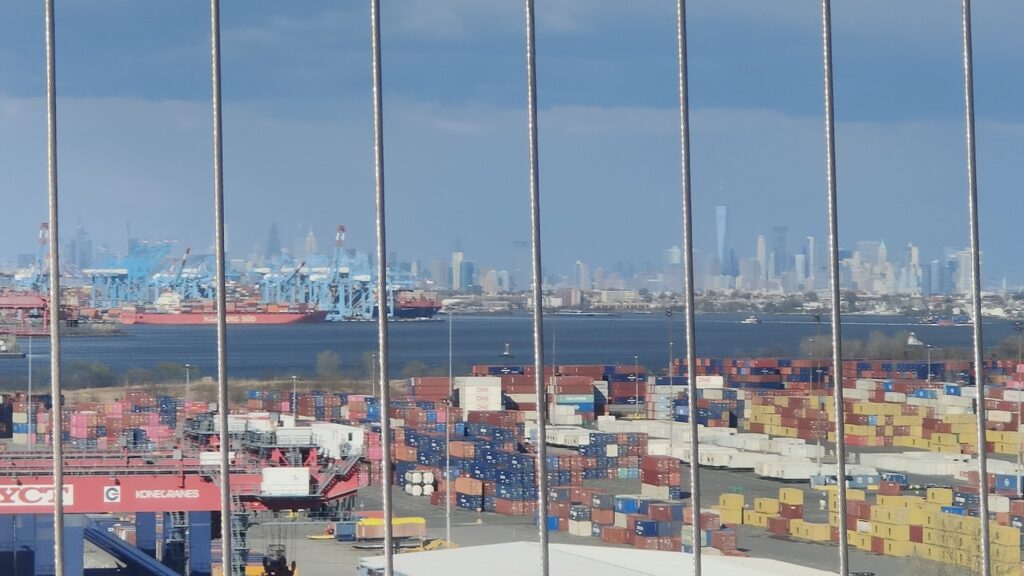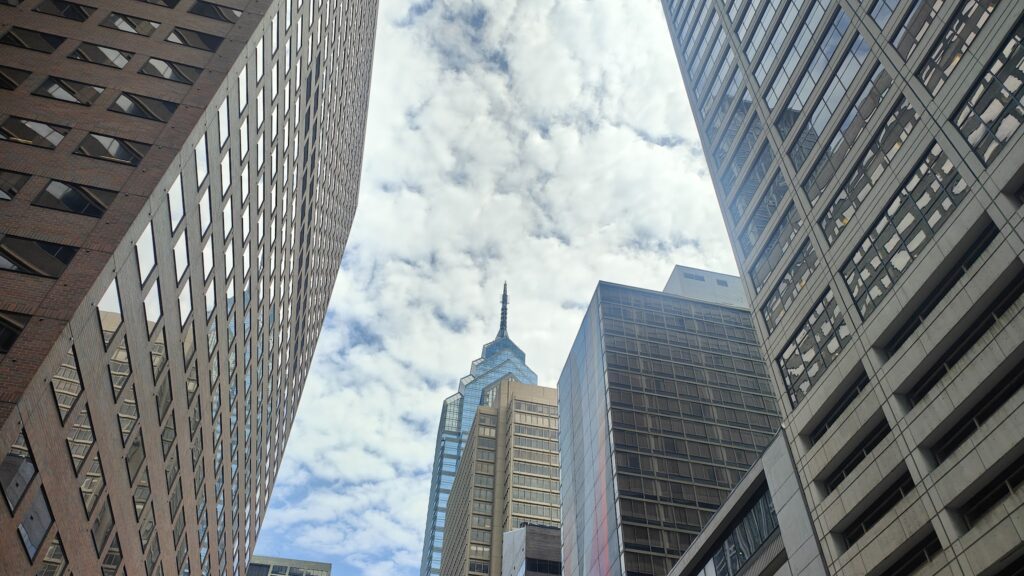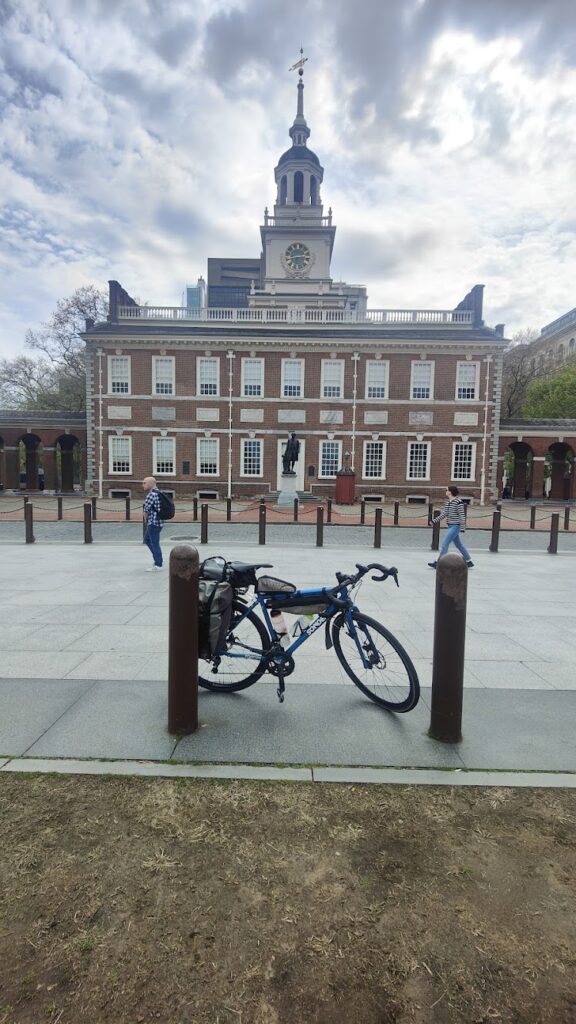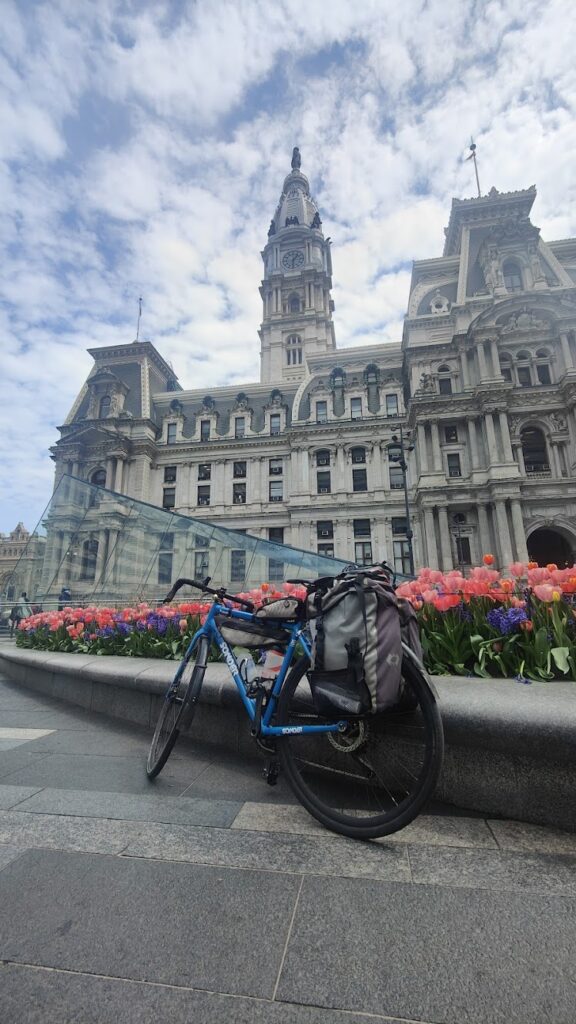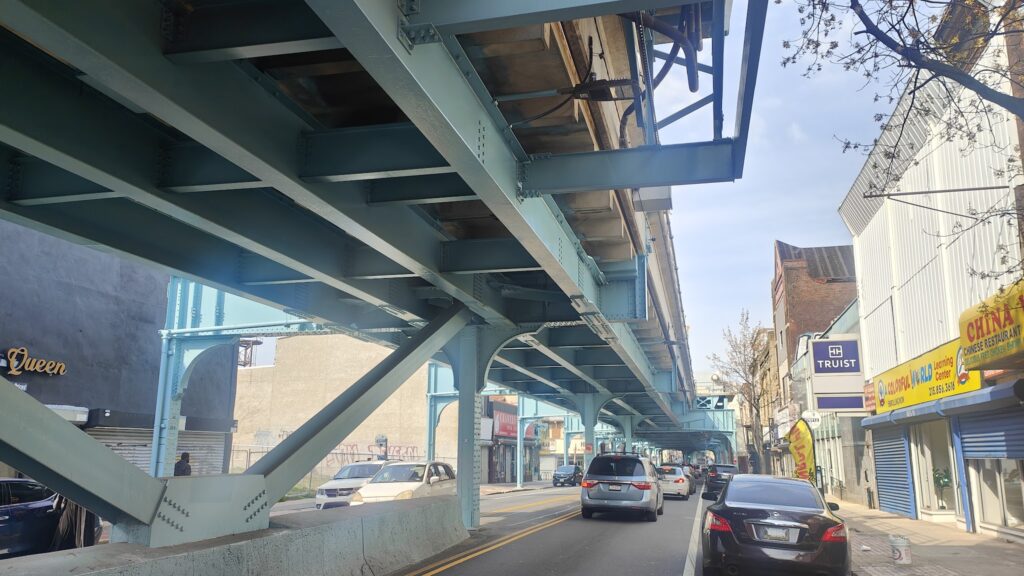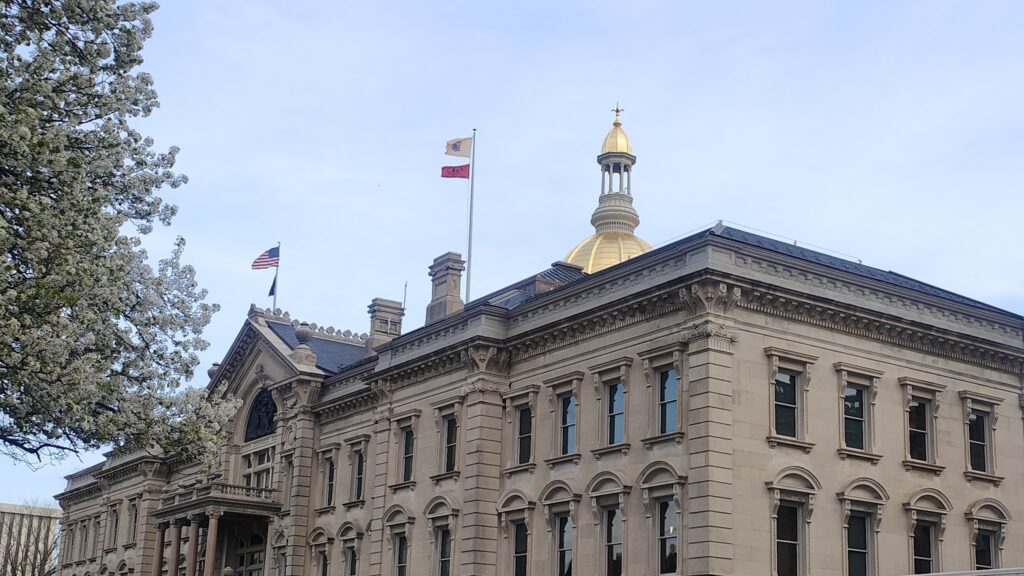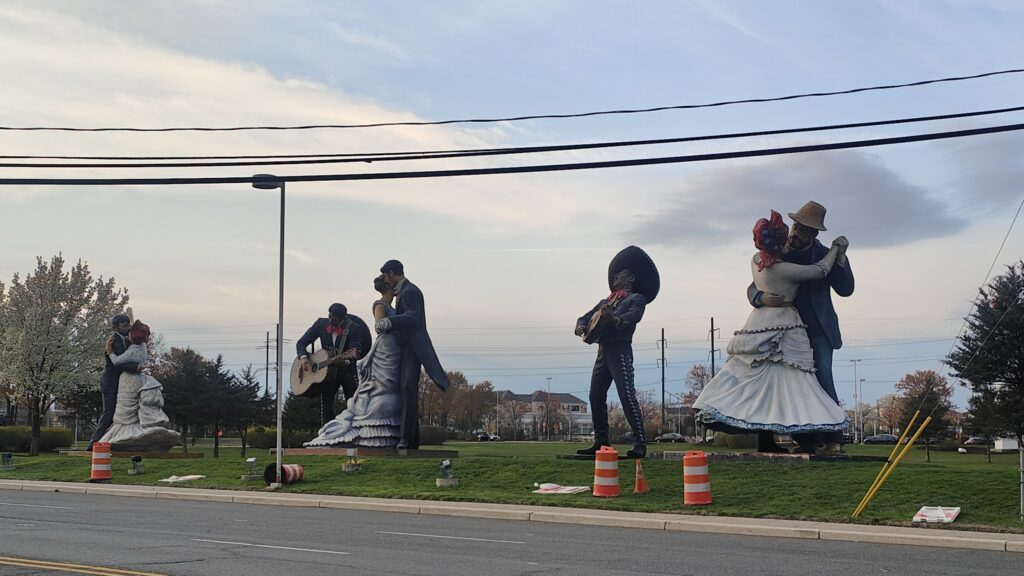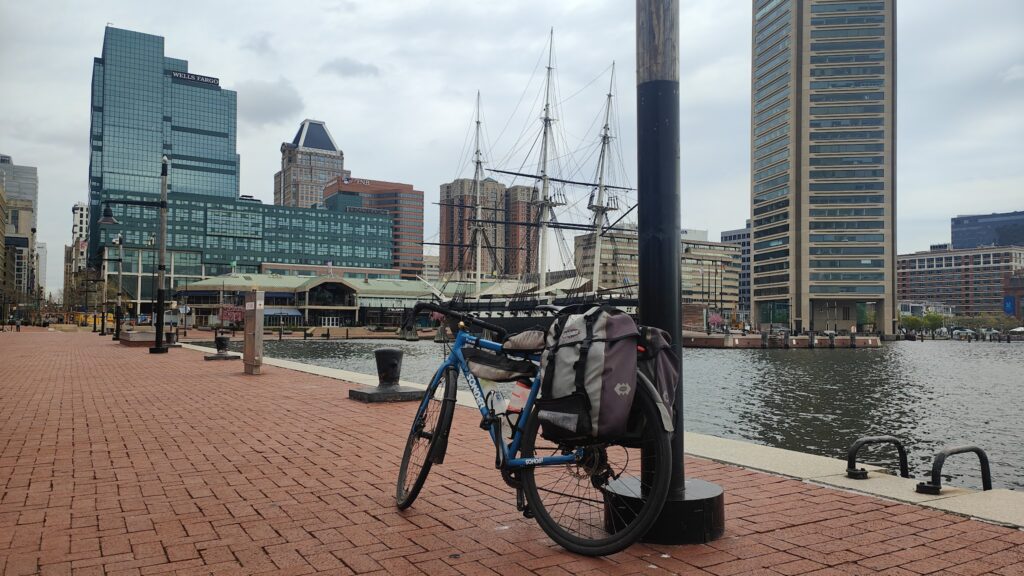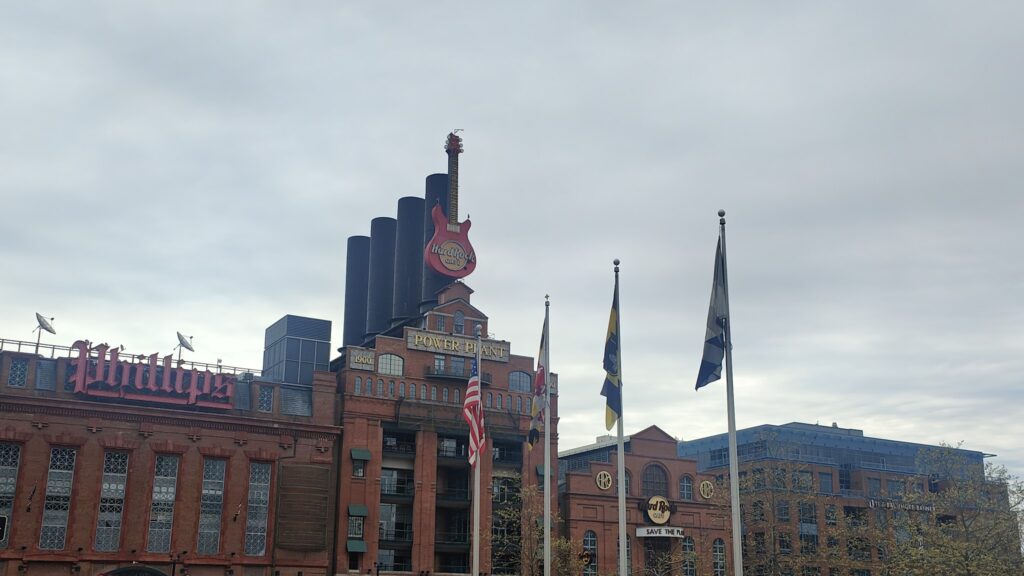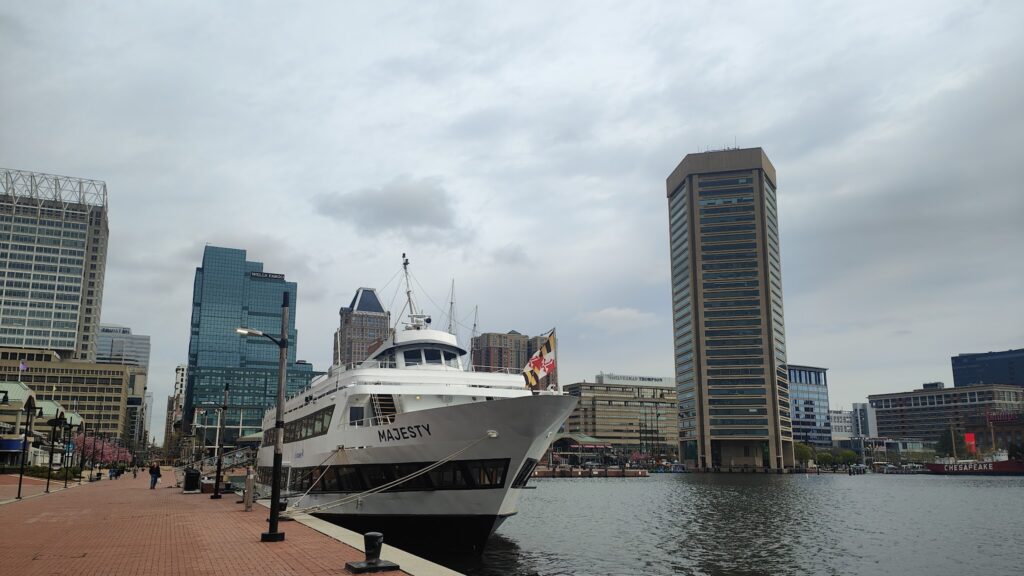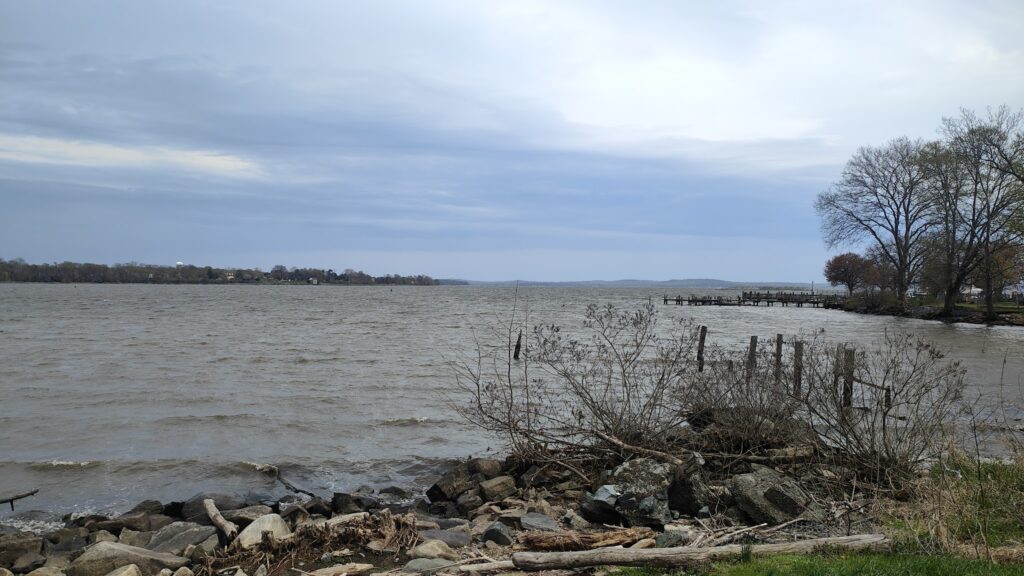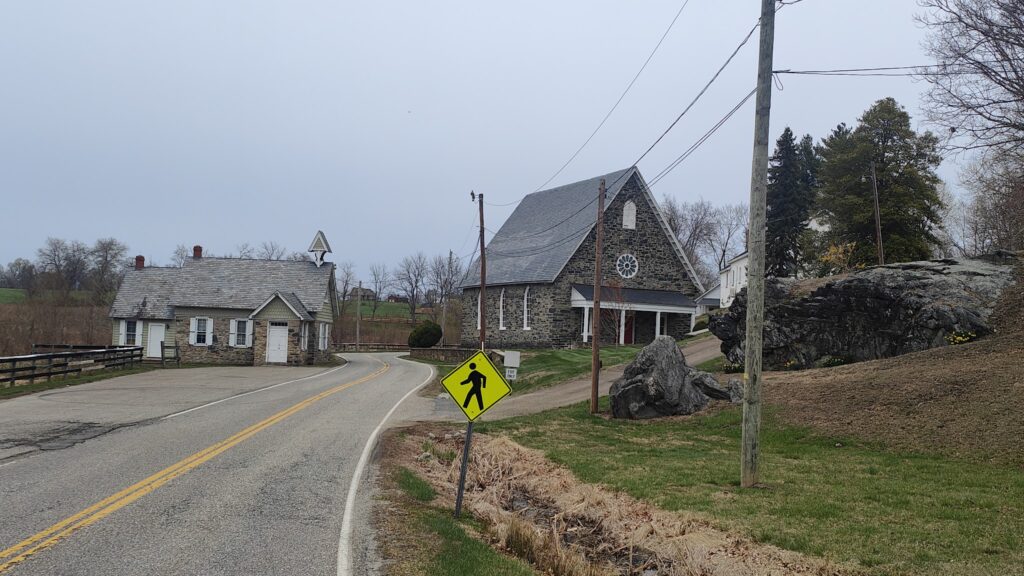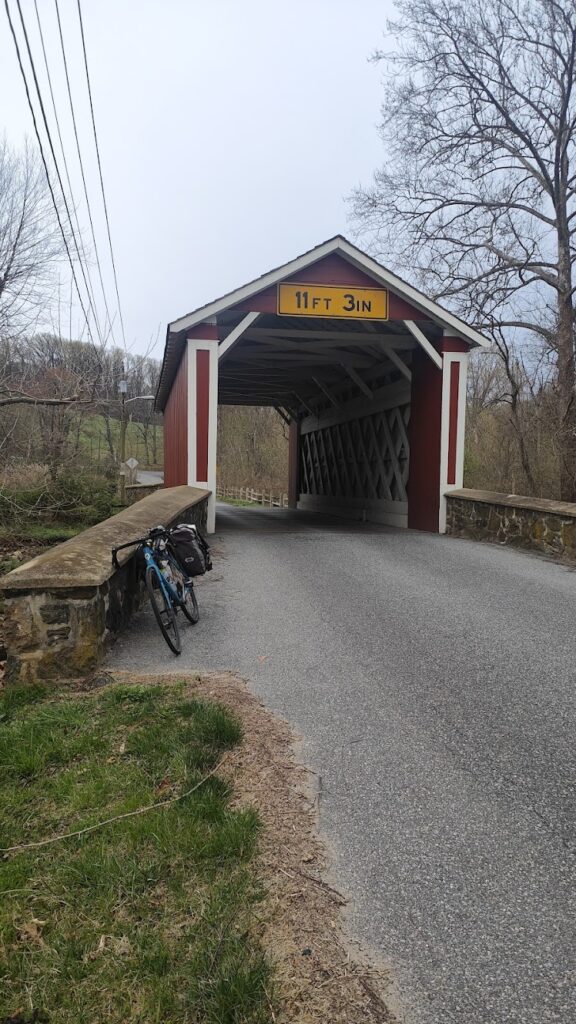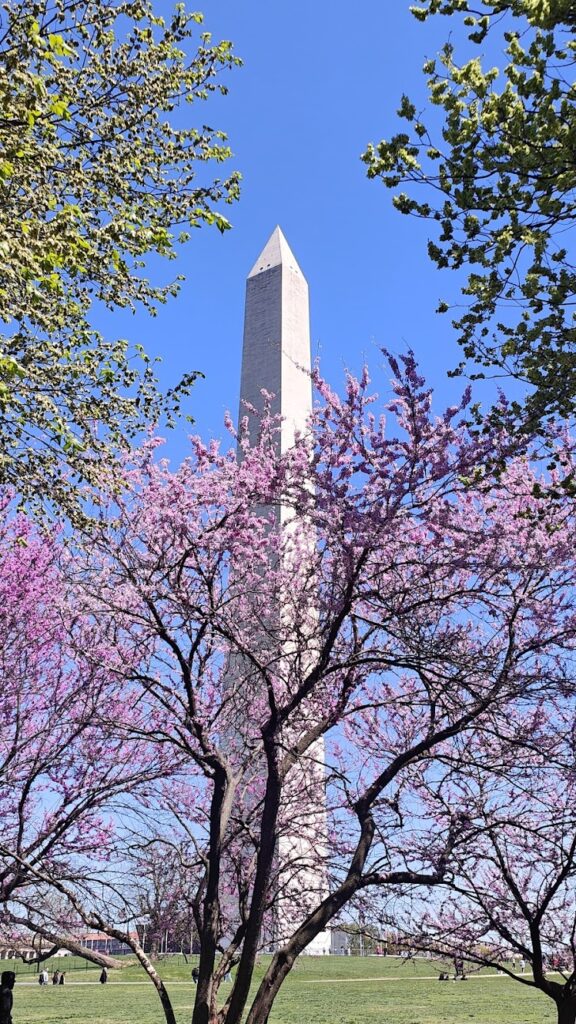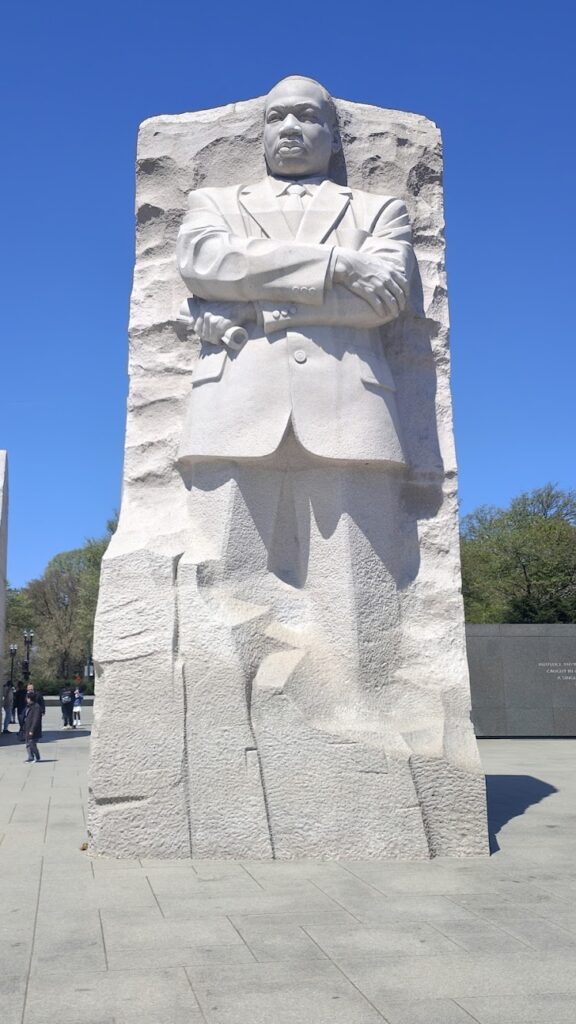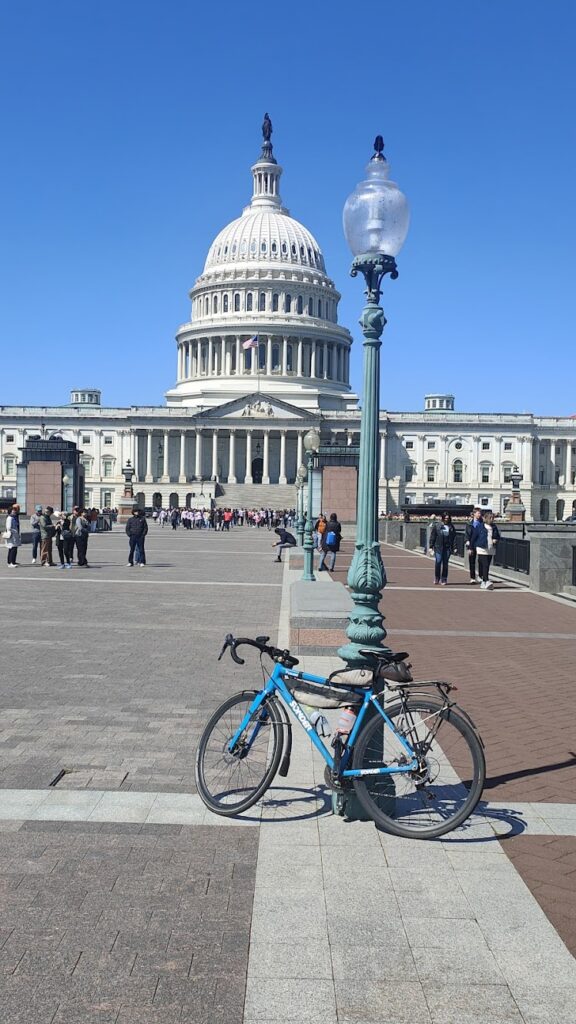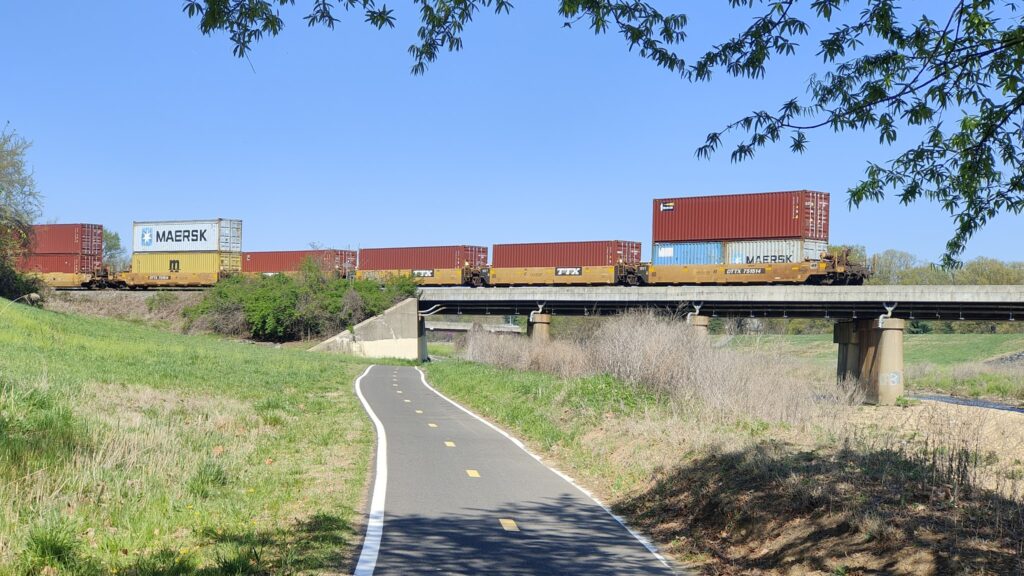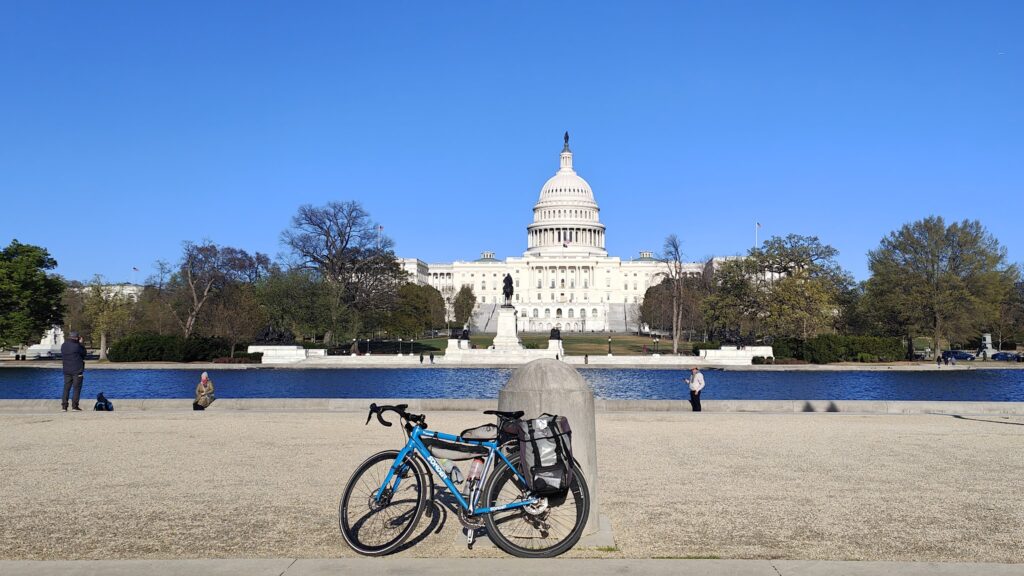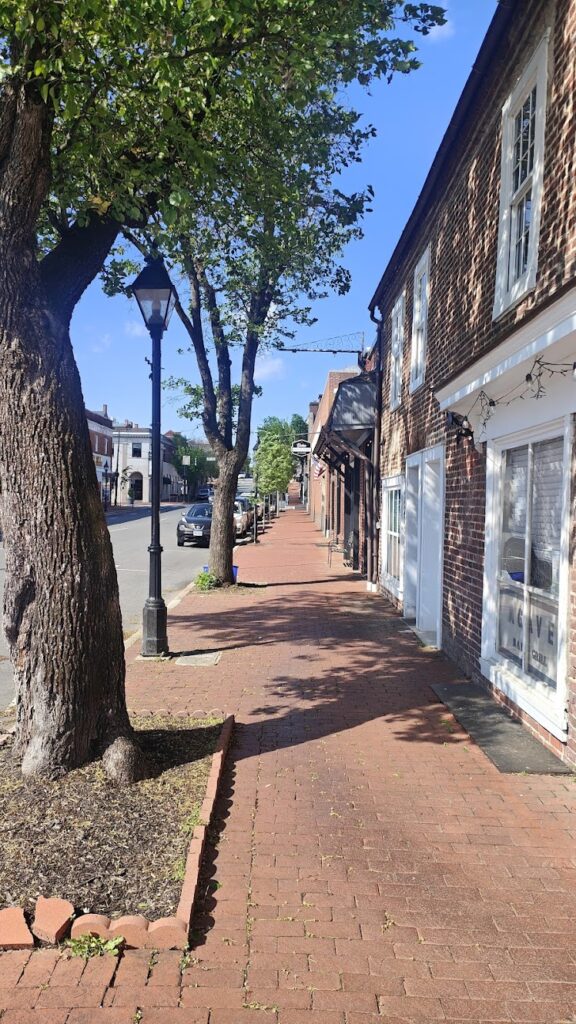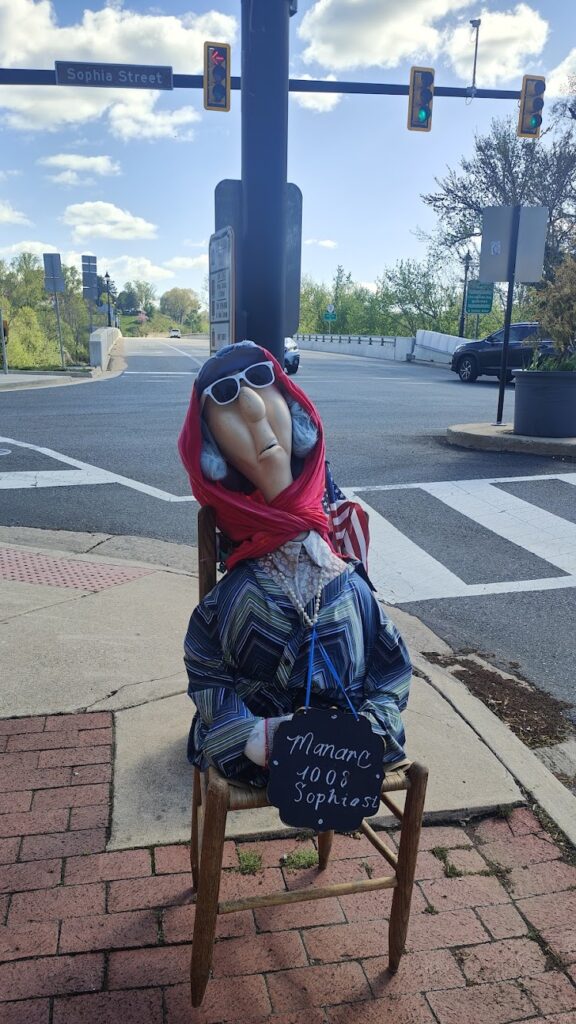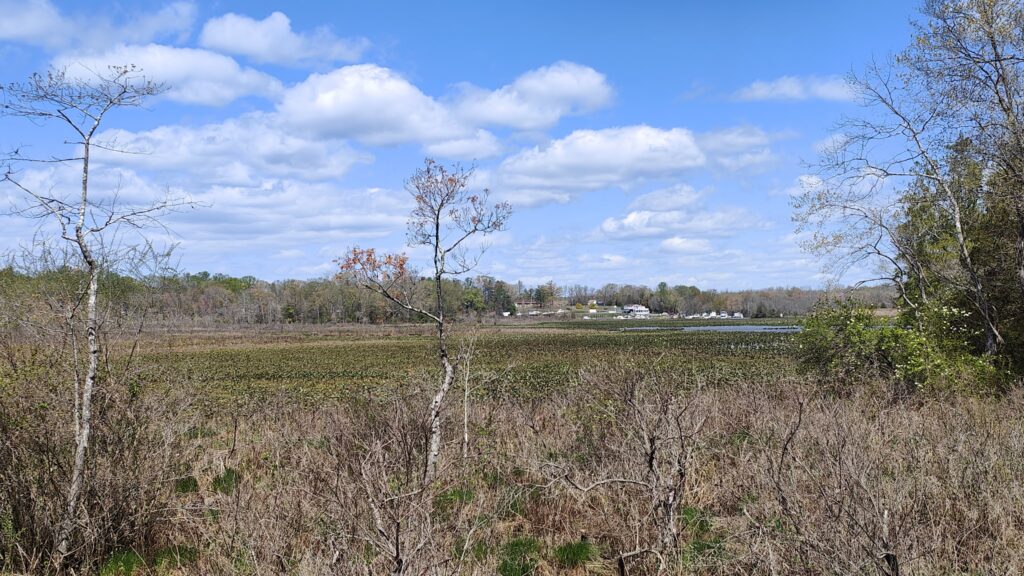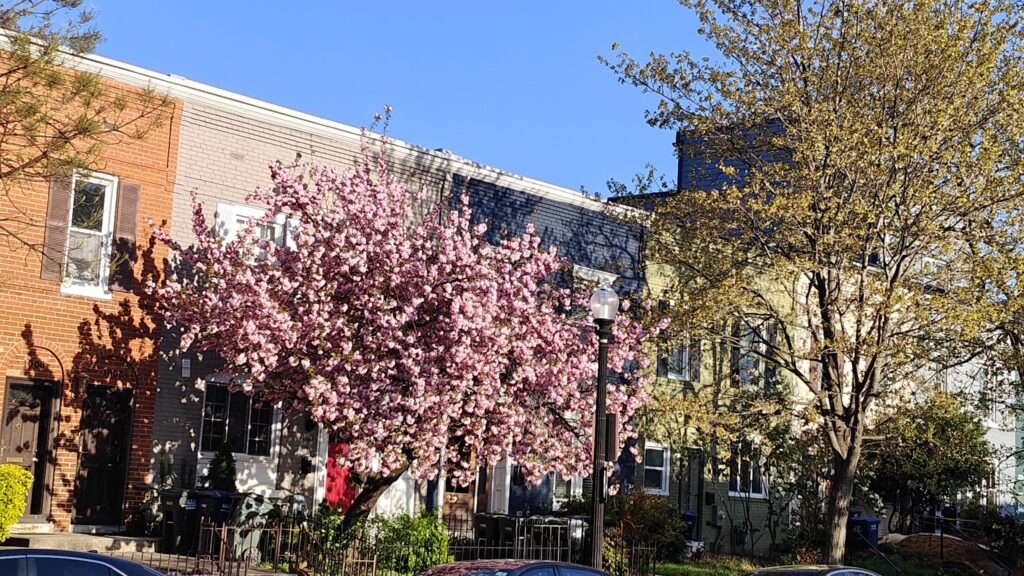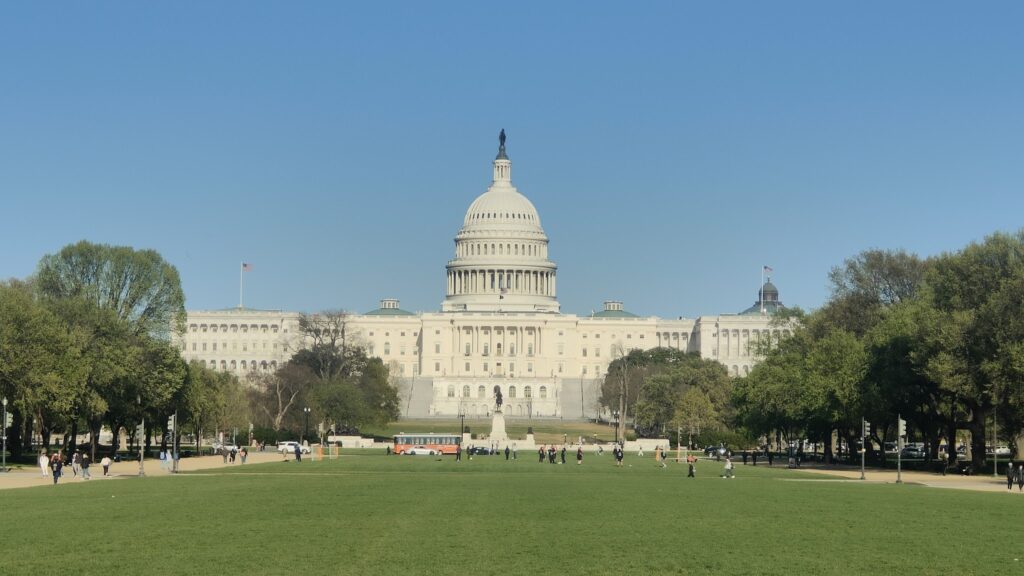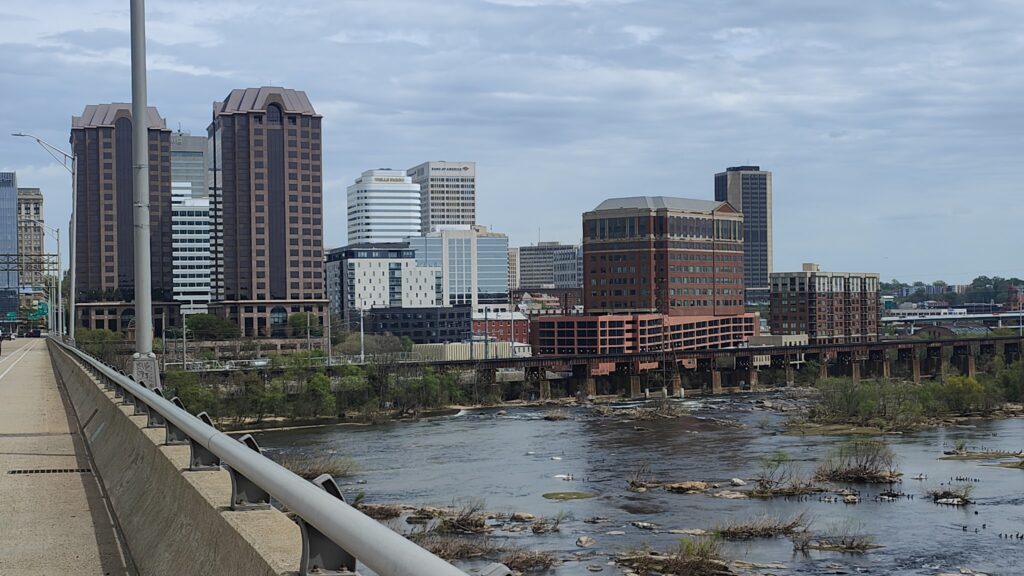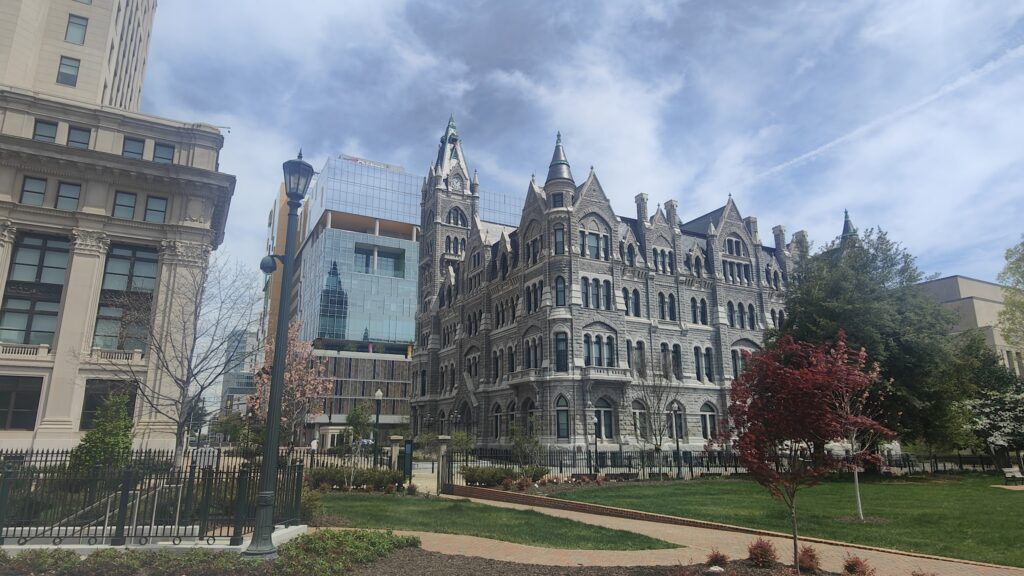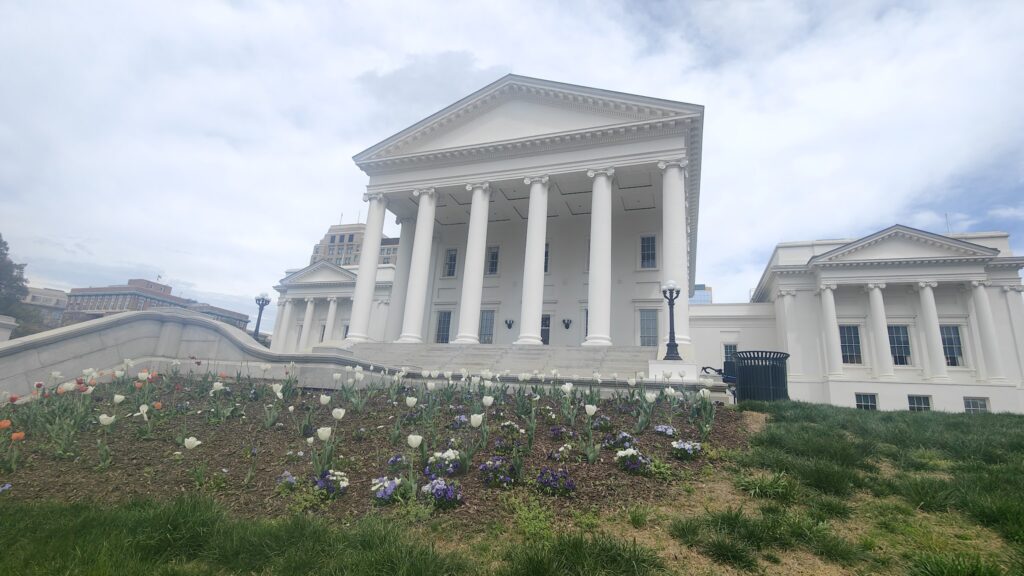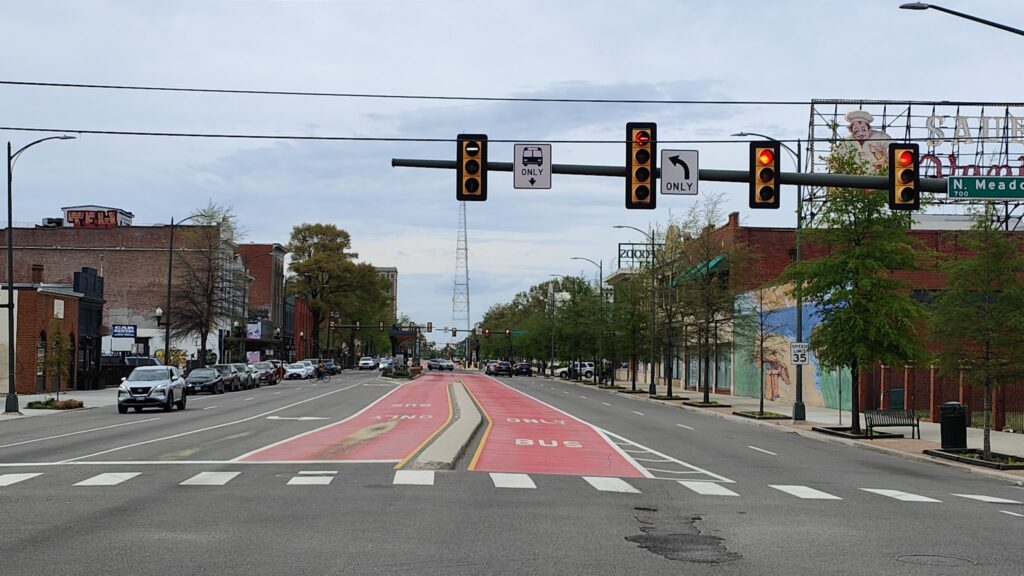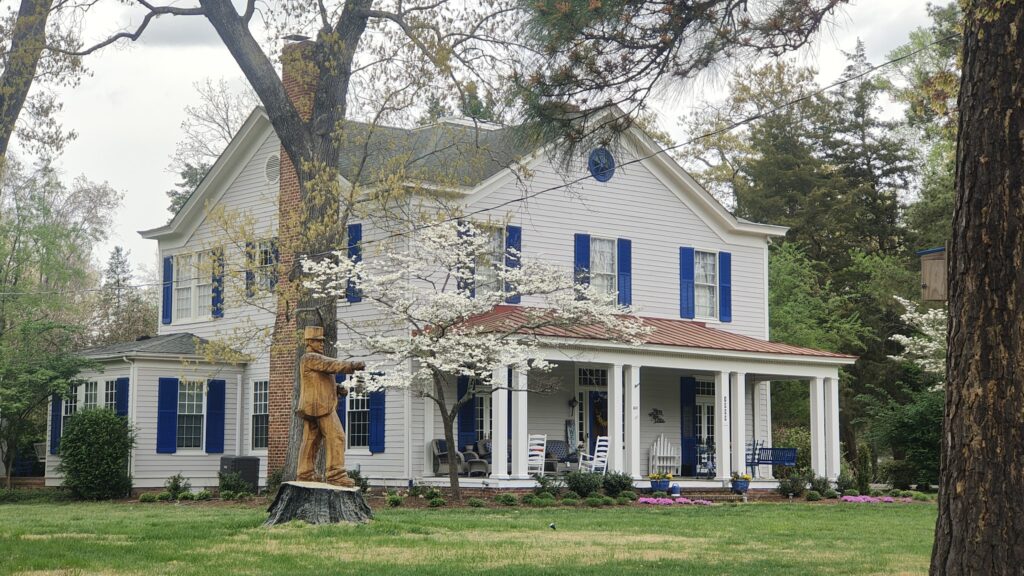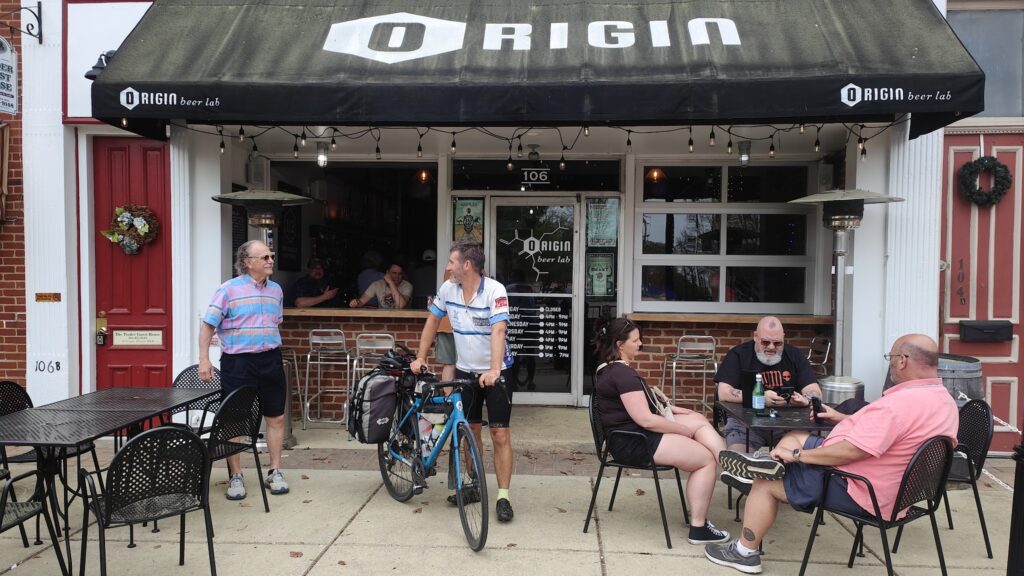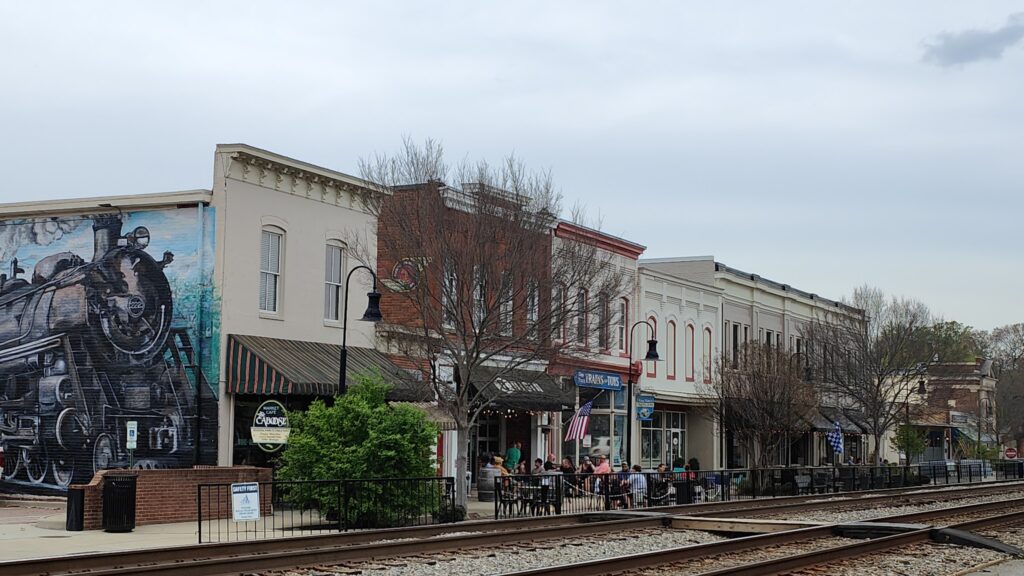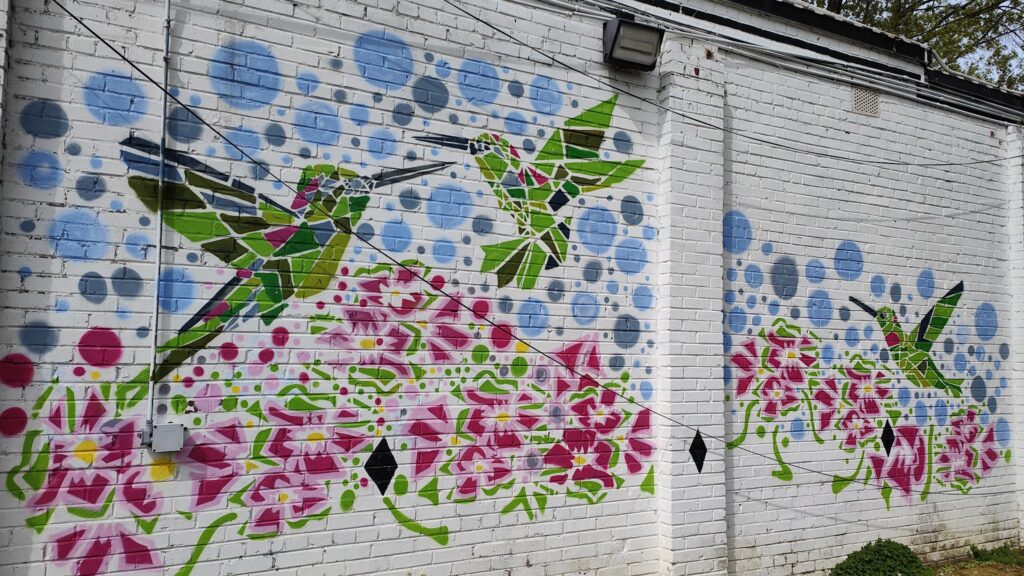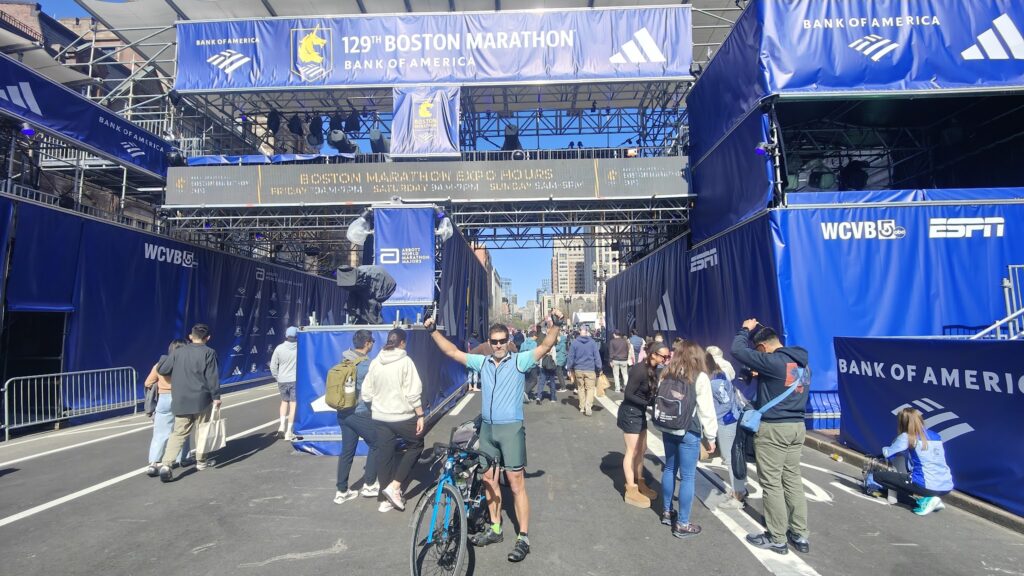
It wa always my intention to be in Boston by Easter Sunday, the day before the grand spectacle of the Boston Marathon. My run of amazing weather continued to the last day of my trip and I was able to leave Providence in glorious cycling conditions. People were telling me it had been cold and grey until just a couple of days before. I told them I had brought the sunshine with me. Sometimes I start to believe that it is more than just good luck. In fact, to be fair, perhaps it was in this instance. You can call it good planning if you like, but I always felt that riding north from Florida from March into April would give me my best chance of great weather in every state, and so it proved. I hope the same applies in reverse in late summer when I return to take on the northern section of North America’s east coast. The weather can make all the difference. Over the years I have done remarkably well in all of my cycling adventures. I’d like to think that can continue.
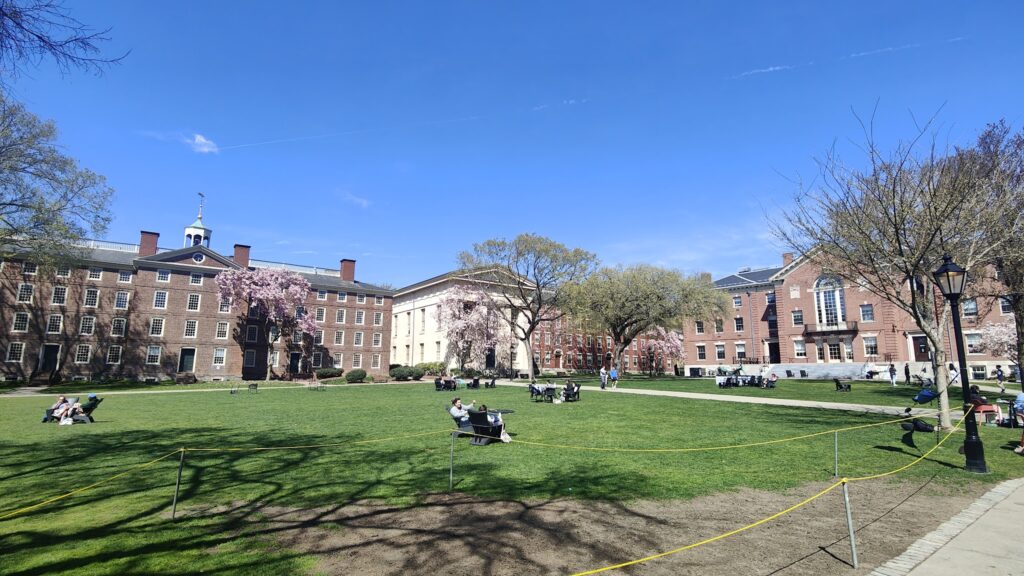
I had left myself just under fifty miles to reach the marathon finish line, which Scott, my Boston host and a college friend of Clayton, had suggested would make a very appropriate end to my ride today. I had set expectations with my welcoming committee that I might make it there by around 3pm, but I should have known better. Giving myself a deadline like this means I am always riding against the clock, and I prefer not to have that pressure. It also relies on me getting a prompt start, which – as usual – I didn’t quite manage. One reason for this was the sharing of a family ritual on Easter Sunday morning to decorate the shells of boiled eggs with wax crayons. My hosts Justin and Jen were keen to give it a go, and we did a nice job between us. Then I made a detour (following local advice) to see the historic buildings of Brown University in Providence. I’m glad I did – they were beautiful – but all the time my cycling window was closing.

I could still have made it easily enough were it not for my second puncture of the trip. I don’t know what caused it, but I had to use my new inner tube within a day of buying it! It is an occupational hazard, and one puncture per thousand miles of cycling is not a bad average. But it meant I would have to put back my arrival time. I optimistically pitched for 3.45pm at the finish line and hoped for the best.
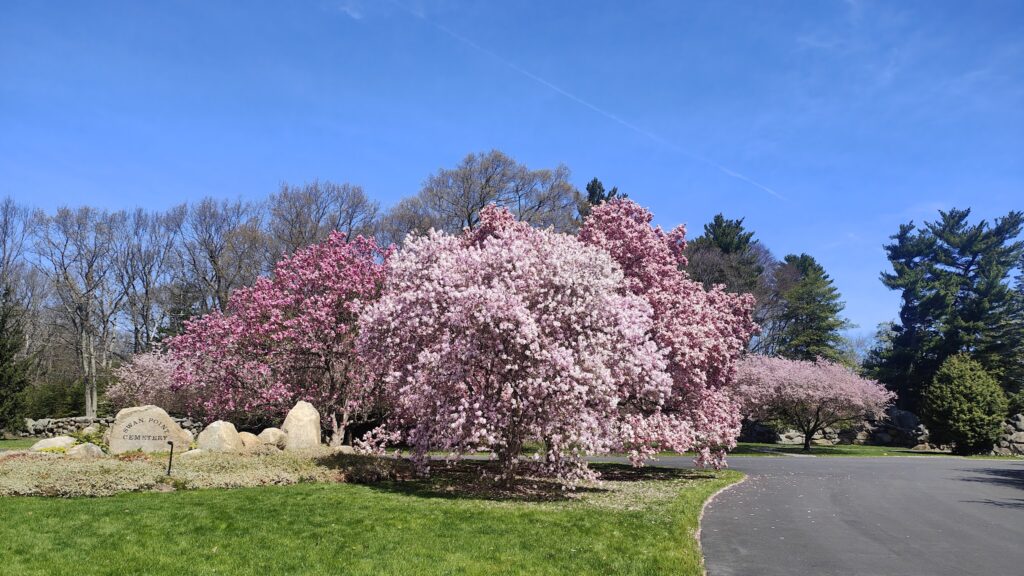
Providence gave way seamlessly to Pawtucket, an attractive riverside town with a collection of old mills, churches and other good buildings. And from there I seemed to follow smaller, quiet roads for most of the way to the edge of Boston. It was an enjoyable few hours. I was heading in a roughly straight line north east, and I finally reached the suburbs and picked up Washington Street. This was a great way straight in to the city centre and it rolled up and down a few hills until, from the crest of the last hill, the Boston skyline was spread out before me. It looked closer than it was, but it gave me renewed faith in my arrival prediction. For the final few miles, I was back on cycle paths along Boston’s south west corridor, riding alongside a suburban railway line making for downtown. A well chosen left turn on Massachusetts Avenue took me past the world headquarters of the Christian Science church and out into the finishing straight of the marathon course on Boylston Street. A couple of blocks later, and a block short of the finish line, I had to dismount due to the volume of people all filling the wide street and having their photos takes.
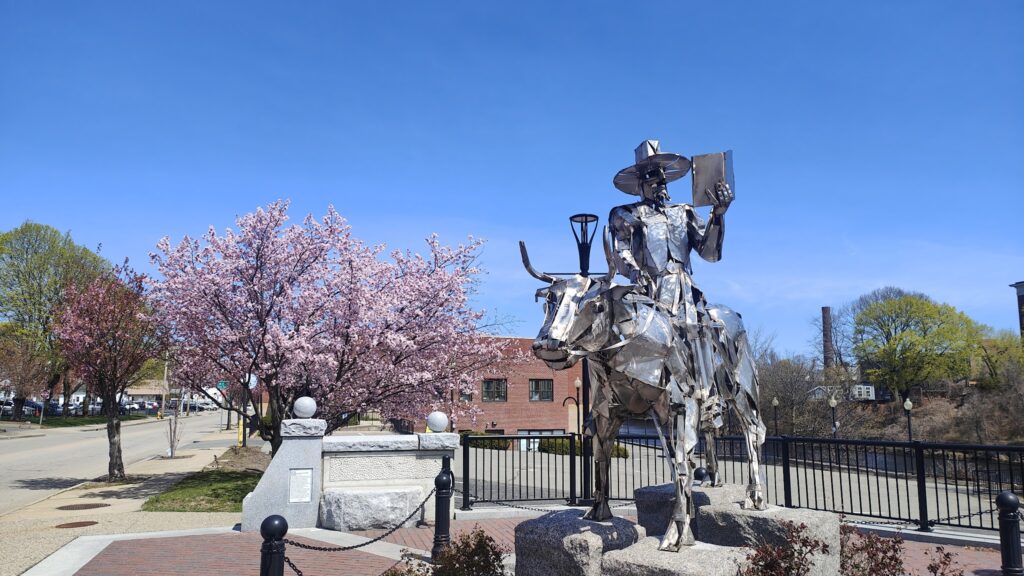
A voice from the crowd said “Are you Mark?”. It was another Jen, Scott’s wife, who had come out to meet me. Together we located my brother, Paul, his wife, Elspeth, and their Boston dwelling friends. I was on time! Photos were taken and then the focus of attention switched to Elspeth, who would be running the marathon the next morning. She has been collecting the world’s big six marathons and this would be her fourth after London, Berlin and Chicago. The forecast was excellent and we made our plans to join in as spectators tomorrow, before heading our separate ways. Scott and Jen were superb hosts and their city centre apartment, five blocks from the finish, had the most spectacular roof garden. Over dinner we compared remarkably similar stories of world travel from our earlier lives, and I felt once again that I couldn’t have landed anywhere more perfect for my last two nights in the USA.

And so, my bike and I had made it all the way here from Key West, the small matter of 2,000 miles away. I made more stops along the way than in previous trips, because there were places to see – cities especially – and family to visit that I didn’t want to miss. But I had enough time to do all that and still not feel rushed. I cycled for three days out of every four, actually riding for 28 days in total. It fit beautifully into the time I had given myself, which in turn had come about as much by accident as anything, as these things typically do for me. I had pedalled my way up through Miami, St Augustine, Savannah, Charleston, Washington DC, Philadelphia and New York City, and now here I was in Boston, ending my trip in style and with family. It all felt just like I hoped it would. Better, in fact, in the end. A job well done, even if it was really only half done. But the second half would have to wait. It was time to go home and enjoy the English spring. I hadn’t been there for almost three months and I was ready to return. I could relax and enjoy the marathon and then look forward to seeing my own surroundings, family and friends for a few months. And then…
